Goldthorpe & Smith Boatshed Becomes Port Jackson & Manly Steamship's Palm Beach Marine Service: Palm Beach Boatsheds
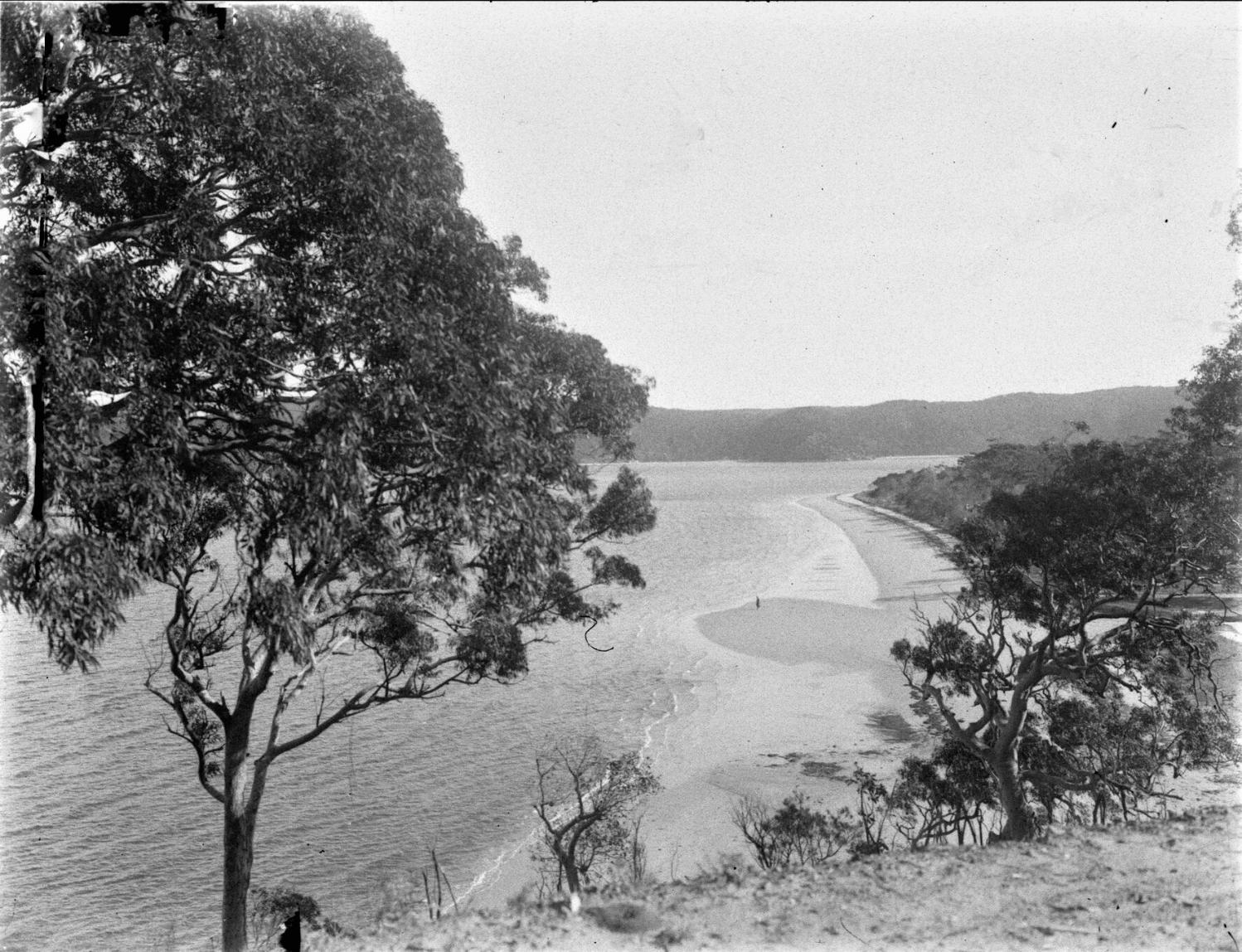
In continuing our insights into Palm Beach Boatsheds, all on the Pittwater estuary side of Palm Beach, a look into the Goldthorpe & Smith boatshed at the southern end of Sandy Point Palm Beach represents the second boatshed in the Barrenjoey Peninsula that sprang from a partnership between men who had served together in the Australian Defence Forces and came to Palm Beach to start a business afterwards. However, unlike Carl Gow and Reginald Howlett or the Gonsalves who joined together after serving together in World War I, these men likely knew each other prior to then as both worked as Motor Mechanics, one at Haberfield, the other at Auburn, or even prior to that through mutual acquaintances in the rural areas of western New South Wales.
George Herbert Goldthorpe was born July 26th 1901 at Bathurst, the illegitimate son of Ada Beatrice Goldthorpe, who was a daughter of Wright and Lucy Goldthorpe. Lucy and Wright Goldthorpe, along with their son John Albert Goldthorpe and his sisters emigrated to Australia in 1884 from Yorkshire, U.K..
Ada Beatrice Goldthorpe (1880 -1976) at first tried to get financial support for her son, only to find the courts sided with the father:
POLICE COURT.
WEDNESDAY, November 21. (Before the Police Magistrate.) CHILD DESERTION.
James Alexander Martin was charged with disobeying a summons for the desertion of his illegitimate child. The accused was discharged. Defendant was then proceeded against by summons, the complainant was Ada Beatrice Goldthorp. Mr. McIntosh appeared for complainant, Mr. Kenny for defendant. Mr. Kenny said that complainant was a little sudden. Originally defendant under-took to contribute to the support of the child and paid, according to the agreement, up to November 3rd, and on the 4th November the summons was issued. The man was in work at Dubbo and if he had come to Bathurst he would have lost his situation. He thought the case would be heard in his absence and for that reason did not come in answer to the summons. As a result of this he has lost his place and was not in a position to keep up the contribution. Mr. McIntosh said that this was a Dubbo case and the agreement was made between an attorney there and the parties. It was on her attorney's advice that she issued the summons and as defendant was an unmarried man it was thought best to have an order from the court. He (Mr. McIntosh) was not aware that the amount had been paid up and would not have applied for a warrant if he had known. The Police Magistrate said that under the circumstances he would reduce the order to 5s per week for twelve months. The complainant was living with her parents who were in a position to keep her, and he was justified in reducing the amount. POLICE COURT. (1901, November 21). Bathurst Free Press and Mining Journal (NSW : 1851 - 1904), p. 2. Retrieved from http://nla.gov.au/nla.news-article64457596
In 1902 Ada married William Alfred Tough (1874-1938), with whom she had six children. A railway guard prior to his enlistment on 17 September 1914, he embarked from Sydney on board HMAT Berrima on December 19th 1914 aged 40. He was promoted to Warrant Officer (WO) in 1916 and returned to Australia on May 11th 1919.
On July 1st 1919 he deserted his wife and children and returned to France, becoming the proprietor of the Café de Sydney in Boulogne-Sur-Mer until his death in 1938. The café was subsequently destroyed by bombing in the Second World War. His sons, NX27356 Private (Pte) Clarence Ernest Tough and NX67518 Pte William Albert Tough both served in the Second World War, and both survived captivity as Prisoners of War of the Japanese.
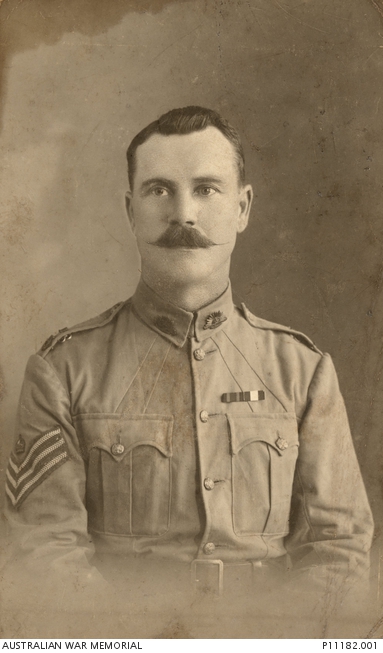
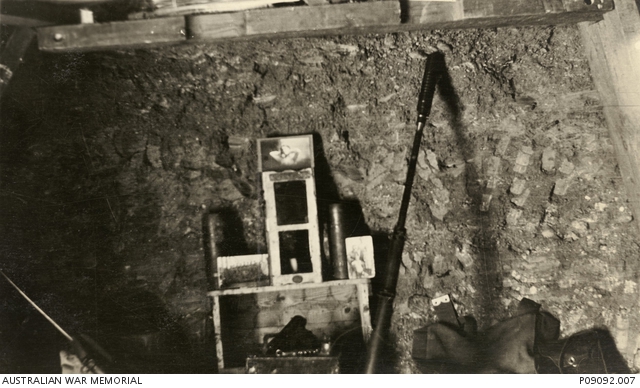
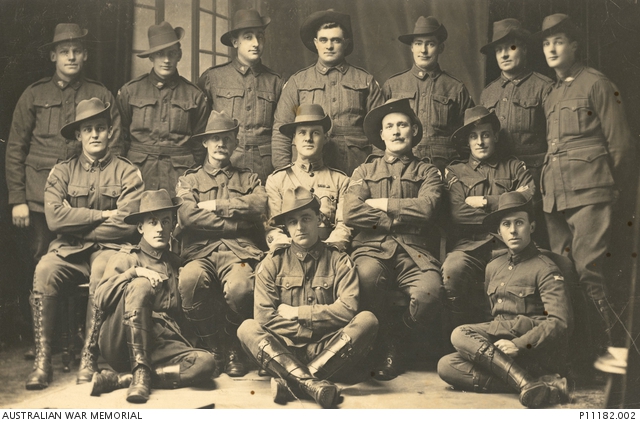
Studio portrait of 159 Trooper William (Bill) Tough. Studio portrait of 159 Trooper William (Bill) Tough. and Interior of dugout belonging to 2555 Warrant Officer William Alfred Tough, 10th Depot, Australian Army Service Corps at Gallipoli, and Group studio portrait of soldiers from the 10th Australian Depot Unit of Supply. Second row, seated third from left is 2555 Warrant Officer (WO) William (Bill) Tough.
Both Wright Goldthorpe and son John Albert worked for the NSW Railways, possibly beginning in Dubbo, and then Wellington, Lithgow and Bathurst and for the Tasmanian Government Railways before settling in Auburn, NSW.
THURSDAY JUNE 16, 1910.
THE BOARD. MR. C. HODGSON (Supt. of Lines, Traffic), Chairman. MR. J. S. SPURWAY .(Secretary for Railways), Commissioners' Représentative. MR. CUTHBERT BROWN (President Amalgamated Railway and Tramway Assn.), Employees' Representative.
Wright Goldthorpe, driver, Dubbo, was charged with breach of instruction contained in Weekly Speed notice No. 12, in running No. 1 mixed train at a speed much in excess of 25 miles per hour, between Curban and Gular, 23/3/10. Punishment.—To be reduced to the position of third class driver, rate 13/', and confined' to goods train working, 16/5/10. Appellant was represented before the Board by an agent, and after a good deal of evidence was taken, the Board decided to uphold the appeal, and the punishment was thus nullified. THURSDAY JUNE 16, 1910. (1910, June 23). The Railway and Tramway Co-operator (Sydney, NSW : 1909 - 1910), p. 6. Retrieved from http://nla.gov.au/nla.news-article238950919
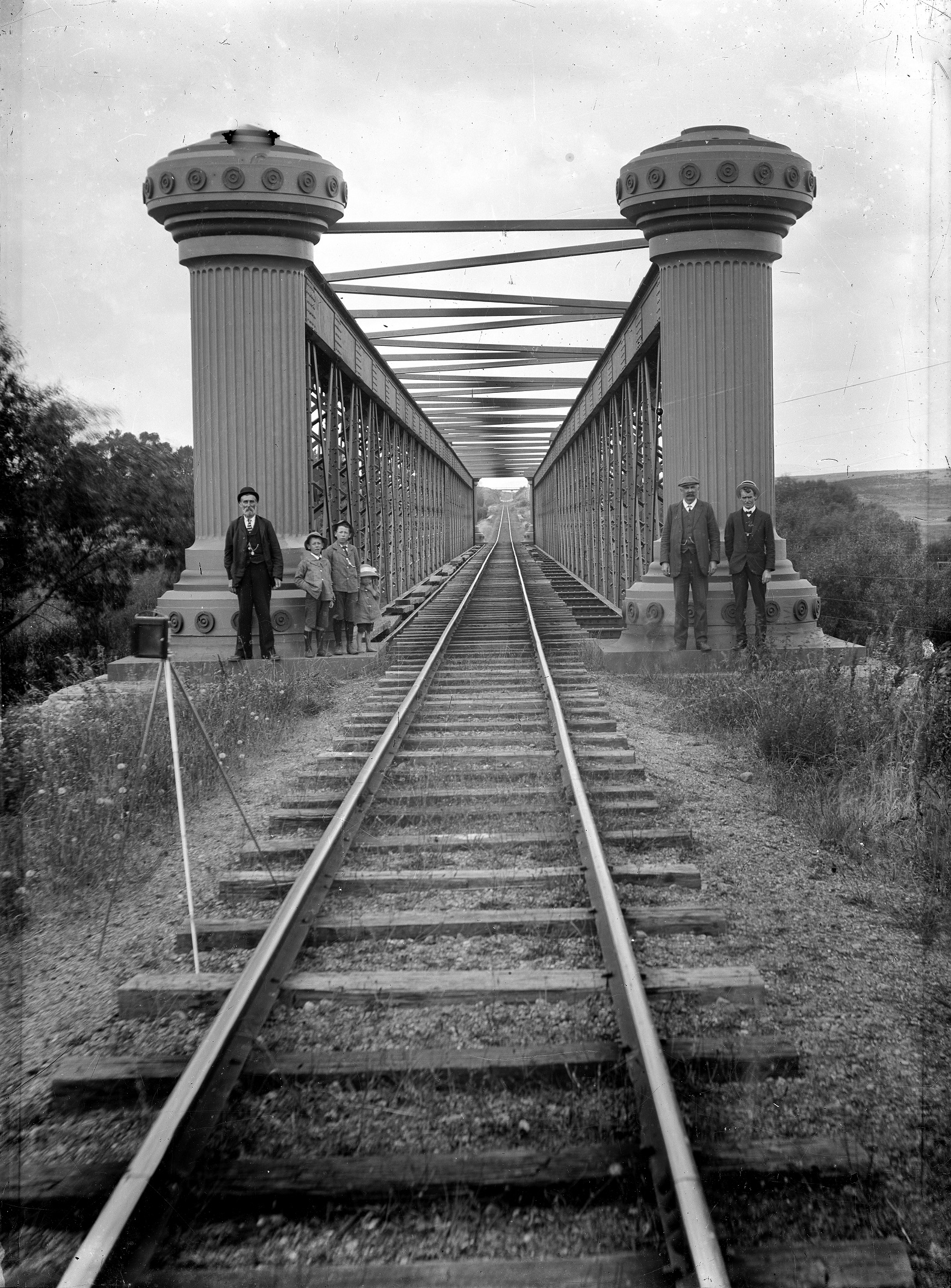
Longford Tasmania, 1915. Wright Goldthorpe at left and John Albert Goldthorpe at right, and possibly George Goldthorpe as the tallest child standing with his grandfather. This photograph is from the archives of the University of Newcastle, held by Cultural Collections, via Flickr.
They later ran a motor garage on Parramatta Road, Auburn (formerly Sydney Rd). John Albert had a great interest and love of steam trains; he always wore a fob watch and chain with a medallion attached. J. A. Goldthorpe was also a keen photographer and entered photographic competitions. Family anecdotes state he enjoyed being the subject of the camera as well.
During the Great Depression and beyond they ran a miniature train built as a replica of a 36 class locomotive. John Albert's two sons, John Herbert and Keith George Goldthorpe were involved at various stages with the miniature train.
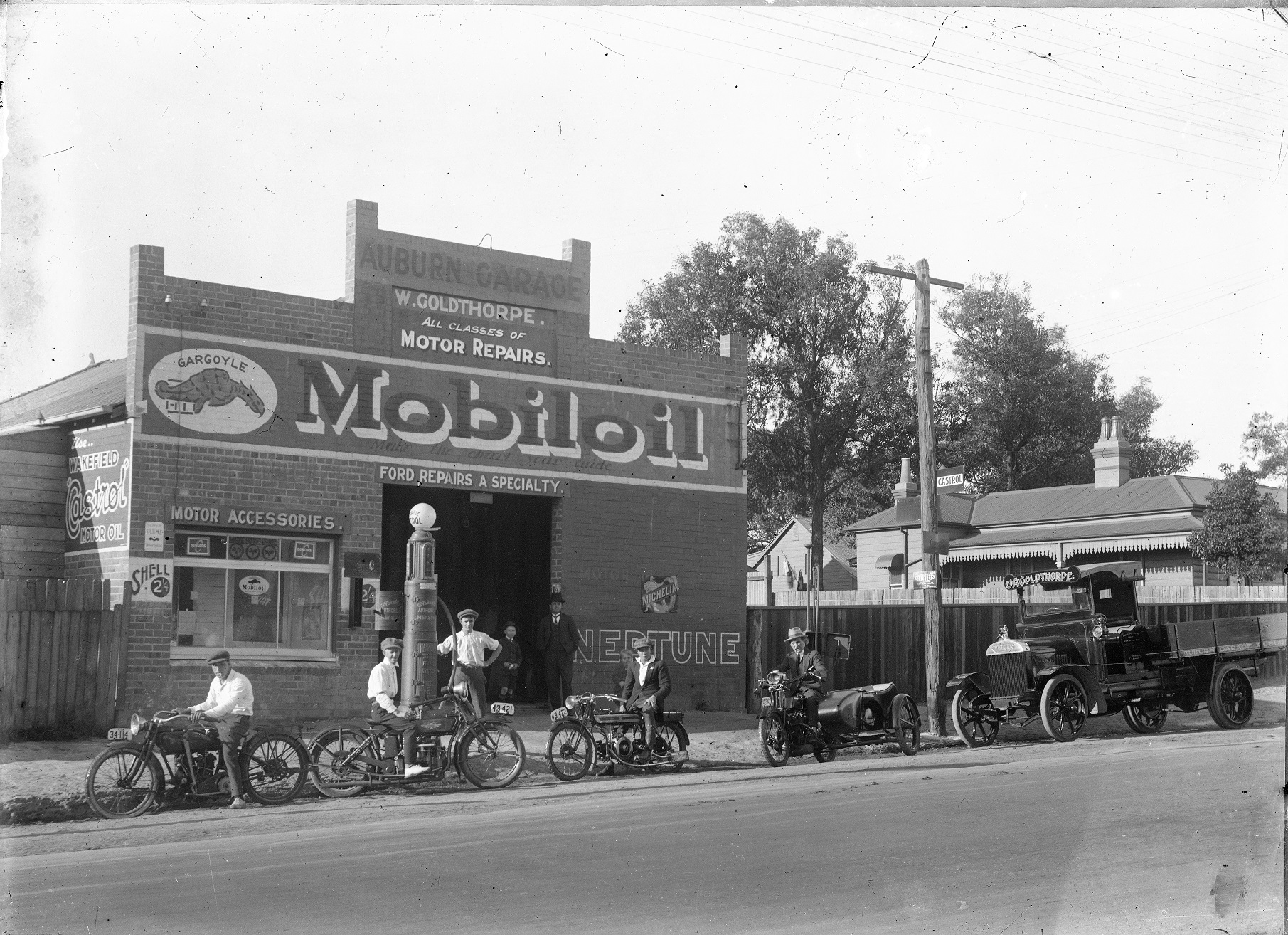
Wright Goldthorpe proprietor, 79 Sydney Rd Auburn. J A Goldthorpe truck at right. This photograph is from the archives of the University of Newcastle (Australia), held by Special Collections in the University Library, via Flickr.
It is likely that George Herbert Goldthorpe worked in this business, learning his trade. John Albert would take over the business when his father passed away:
GOLDTHORPE.—July 24, 1925, at his residence, Elmhurst, corner of Stubb-street and Parramatta-road, Auburn, Wright, beloved husband of Lucy Goldthorpe, aged 75 years. At rest.
GOLDTHORPE. - The Relatives and Friends of Mrs W GOLDTHORPE and FAMILY are respectfully invited to attend the Funeral of her dearly beloved HUSBAND and their FATHER, Wright Goldthorpe, to move from his late residence, Elmhurst, corner of Stubb street and Parramatta road Auburn, THIS (Saturday) AFTERNOON, at 2.30 pm for interment in Baptist Cemetery, Rookwood Friends alight at No 1 Platform in Cemetery. Road, by Motor Service. WALTER F. PETERS and CO, 'Phone, UX7261 Funeral Directors. Auburn. Family Notices (1925, July 25). The Sydney Morning Herald (NSW : 1842 - 1954), p. 13. Retrieved from http://nla.gov.au/nla.news-article16211365
GOLDTHORPE.—June 19, 1939, at her son's residence, 1 Stubb Street, Auburn, Lucy Goldthorpe, beloved mother of Hannah, Ada, and Jack, aged 81 years. At rest. Family Notices (1939, June 20). The Sydney Morning Herald (NSW : 1842 - 1954), p. 10. Retrieved from http://nla.gov.au/nla.news-article17594204
George Herbert Goldthorpe married Mary Rowe in 1924, and the couple would have a son and two daughters. They would later divorce - the proceedings commencing in 1937 and finalised in 1946:
GOLDTHORPE (nee Mary Rowe).- August 20, at 33 Grosvenor-crescent, the wife of George H. Goldthorpe, of Auburn - a daughter. Family Notices (1925, August 22). The Sydney Morning Herald (NSW : 1842 - 1954), p. 14. Retrieved from http://nla.gov.au/nla.news-article16237098
GOLDTHORPE v GOLDTHORPE Mary Mildred Goldthorpe (formerly Rowe) v George Herbert Goldthorpe. Marriage, July, 1924, at Glebe. Issue, conjugal rights. Restitution order. Mr. Brierley of Messrs. Bruce Brierley and Co., for petitioner. IN DIVORCE. (1939, February 17). The Sydney Morning Herald (NSW : 1842 - 1954), p. 3. Retrieved from http://nla.gov.au/nla.news-article17556410
George Herbert Goldthorpe, exceeding speed limit off the Pacific Highway at Ourimbah on March 13, fined £2/4/ and 8/--costs. Speedsters Fined (1940, May 21). The Gosford Times and Wyong District Advocate (NSW : 1906 - 1954), p. 8. Retrieved from http://nla.gov.au/nla.news-article166934175
No War Service record exists in the Australian records for George Herbert Goldthorpe - it is probable, due his trade, that he was pat of those who were considered fit for service in Reserved Occupations. Close to 30 percent of men liable for service were exempted because they worked in 'essential services' and nearly 14 per cent more were graded medically unfit to serve. Key industries and jobs such as baking, farming, medicine, and engineering, were those listed as essential services. Given his then address he may well have served at Richmond for the RAAF servicing equipment and that was where he and Thomas Beaumont Smith also either met for the first time, or shared their common interests backgrounds.
George died in 1976, in Tuncurry, New South Wales, Australia, at the age of 75.
Thomas Beaumont Smith (1901-February 5th, 1972) was born November 15th, 1901 at Norwich, England, the eldest son of James William Wingrove Smith and Teresa (Beaumont) Smith. Some sources, including his enlistment papers, state his birth year was 1905 as well as 1901. He served a 5 years apprenticeship with Wallace and Henderson at Haberfield as a Motor Mechanic and continued General Motor Engineering studies 'on his own account'.
He married Catherine Margaret Rich in 1929, the marriage registered at Wellington, NSW. They would later divorce, proceedings commencing in 1959 and finalised in 1960.
WEDDING
SMITH— RICH
A very pretty wedding was celebrated on December 28th, in the Baptist Church, Wellington, by the Rev. J. Hunter, between Catherine Margaret, eldest daughter of Mr. and Mrs. D. A. Rich, of Corral-leigh, Balladoran, and Mr. Thomas Beaumont Smith, of Dubbo. Miss Burrell, cousin of the bride, who presided at the organ, rendered the 'Bridal March,' from Lohengrin, as the bride walked in accompanied by her father. The bride was beautifully frocked in pure white crepe satin with an overskirt of lace, one side being draped, and falling to the ankle. She wore the customary wreath and veil of cut tulle and carried a bouquet of pale pink and white roses, gift of the bridegroom. The bride was attended by Miss May Munro, cousin, and Miss Olwen Rich, sister, who were frocked in lemon georgette and alice blue georgette respectively, with hats en suite, and carried bouquets of pink roses gifts of the bridegroom. Little Betty Kitch, frocked in pale pink georgette, carrying a basket of roses, was flower girl. The bride-groom was attended by Mr. David Petterson, of Sydney, cousin of the bride, as best man, and Mr. Hilton Munro, also cousin of the bride, as groomsman. The reception was held at the Golden Key. Mrs. Rich, mother of the bride, assisted by her daughters, Misses Jessie and Winsome Rich, received the guests, beautifully gowned in black crepe satin, relieved with mushroom, with a hat to tone. The Rev. J. Hunter presided at the breakfast, where the toasts of the King, bride and bridegroom and bride's parents were honored. The bride cut a three-decked cake, made and handsomely decorated by her aunt, Mrs. W. Burrell, of Gilgandra. The happy couple are beginning their honeymoon at Sydney, travelling via Orange and the mountains, and continuing on to Parkes, their future home. The bride's travelling frock was a biege georgette ensemble and a fancy straw and tulle hat to match. Mr. and Mrs. Smith were recipients of many handsome and costly presents. WEDDING (1930, January 2). Wellington Times (NSW : 1899 - 1954), p. 9. Retrieved from http://nla.gov.au/nla.news-article143516856
He enlisted on Australian soil on November 13th 1939 and was placed in the 1st Battalion before immediately put into training at the R.A.A.F. base at Williamtown and Richmond for 3 months before joining the Royal Air Force in 1940, serving as an Engineer with the 49th Squadron, while still an R.A.A.F. member. He also held a Gunners Badge. His Enlistment paper describes him as 5 feet 7 ½ inches with brown hair, blue eyes and a fair complexion. He was 33 and 11 months years old.
Originally formed at Swingate Down, near Dover, Kent, England in April 1916. In November 1917, the squadron deployed to France and their first operation was in the Battle of Cambrai. When the First World War ended, 49 Squadron became part of the occupying forces and disbanded in Germany in July 1919.
The squadron was reformed in February 1936 from 'C' flight on No. 18 Squadron at RAF Bircham Newton. The squadron initially reformed with Hind aircraft and relocated to RAF Scampton in March 1938. In September of the same year, the squadron started accepting Hampden aircraft, the first operational squadron to do so.
During the Second World War they carried out the attack on the Dortmund-Ems Canal on 12 August 1940. In 1942 No.49 Squadron converted to Manchesters, then Lancasters, and in October led No.5 Group's epic dusk attack on the Schneider armament and locomotive works at Le Creusot. In 1943 the squadron took part in the first "shuttle-bombing" raid (when the targets were Friedrichshafen and La Spezia), and the famous raid on Peenemunde. Among the targets which it attacked during 1944 were the coastal gun battery at La Pernelle on the Normandy coast, and the V-1 flying bomb storage sites in the caves at St. Leu d'Esserent on the River Oise, some 30 miles north-west of Paris. In December 1944, it took part in a raid on the German Baltic Fleet at Gdynia and in March 1945, was represented in the bomber force which so pulverised the defences of Wesel just before the crossing of the Rhine that Commandos were able to seize the town with only 36 casualties.
After his divorce, and the selling of the business, he lived at 144 Pacific Road, Palm Beach. This was then a small timber and stone cottage up behind the Palm Beach fish and chips shop, built in the 1930’s. The home was sold after his death, and was held by the same family until they sold in 2014. Thomas Beaumont Smith became a Veteran Member of Palm Beach RSL:
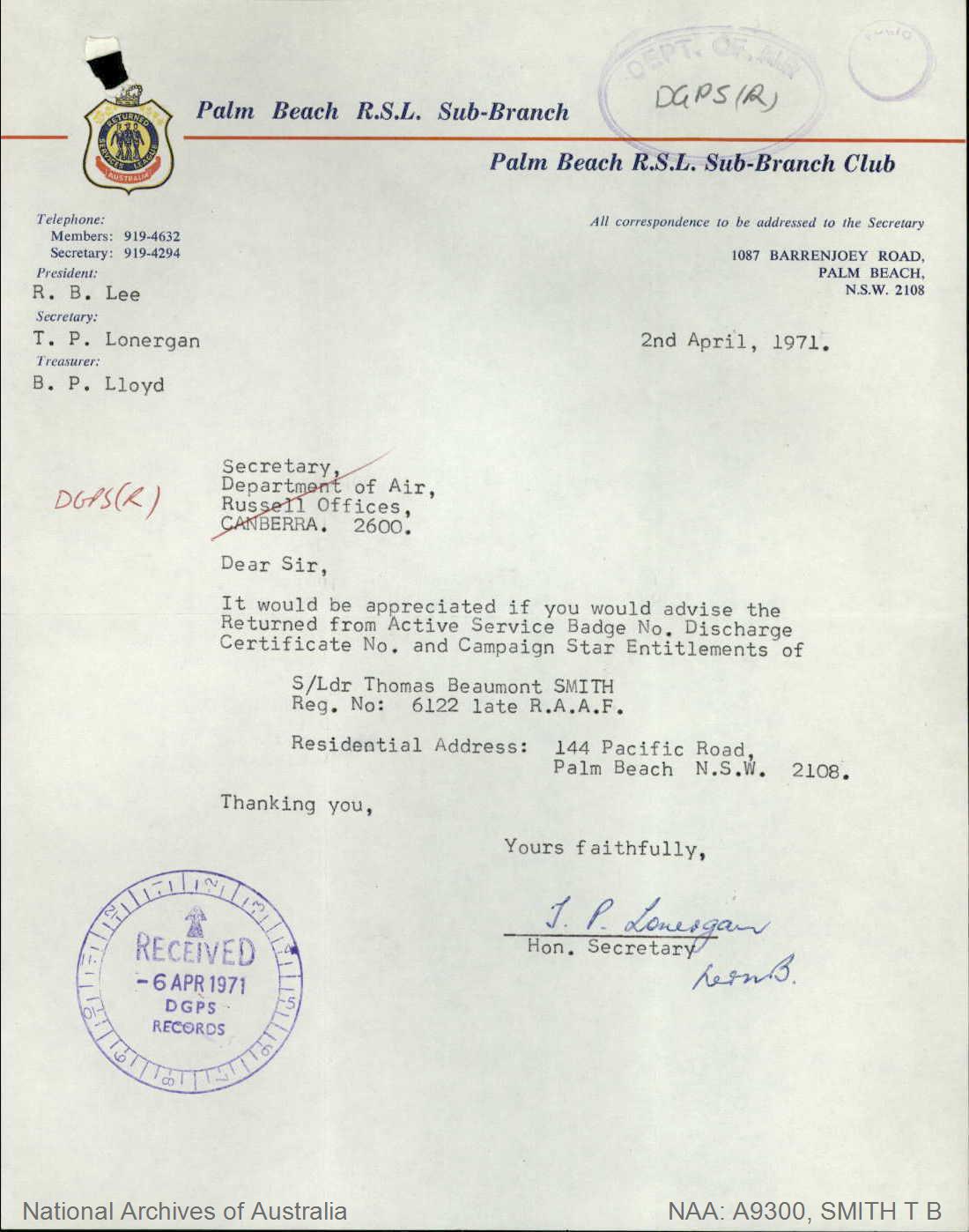
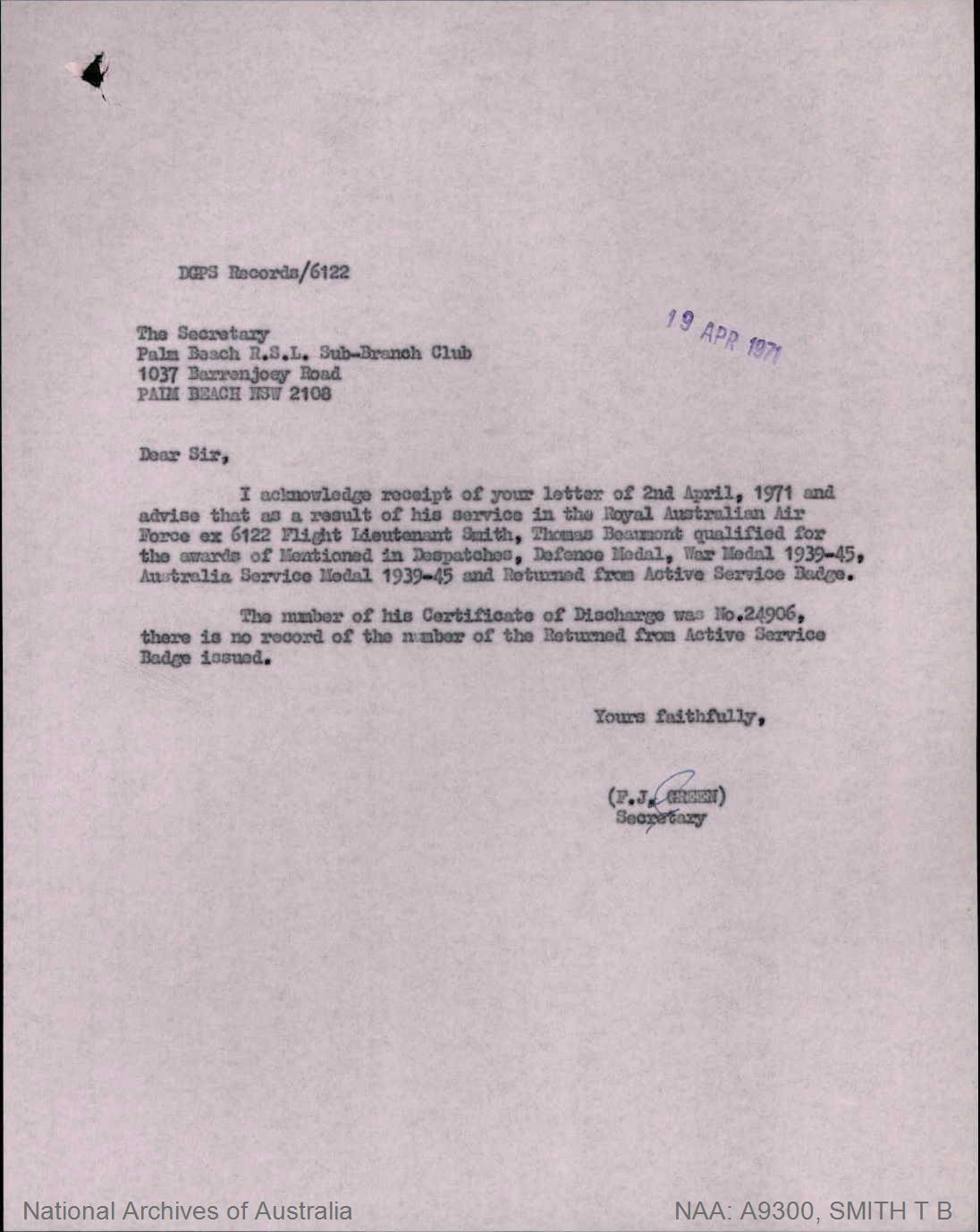
Lot 53 of Estate (Forssberg 1927 land sales) – Volume 4461 Folio 82 was sold to Cyril Leslie Stewart Macintosh of Paddington, Medical Practitioner, on January 30th, 1931.

.png?timestamp=1667859999383)
On January 14th, 1948 then owner Roy Joseph Young transferred the lot as tenants in common to George Herbert Goldthorpe and Thomas Beaumont Smith [New Certificate issue: Volume 5826 – Folio 117/118}:
.png?timestamp=1667860079077)
Soon afterwards they were advertising boats for sale and even sponsoring local sailing races:
HOUSEBOAT four bunks shower toilet many conveniences first class order. Just painted Goldthorpe and Smith Boatshed Careel Bay Palm Beach Tele 87. Advertising (1949, October 15). The Sydney Morning Herald (NSW : 1842 - 1954), p. 13. Retrieved from http://nla.gov.au/nla.news-article18132939
AUX YACHT, wanted. 23ft to 30ft. with straight keel, big beam Must stand rigid inspection. 'Phone, write, or call, Goldthorpe and Smith. Palm Beach 87. Advertising (1949, November 24). The Sydney Morning Herald (NSW : 1842 - 1954), p. 16. Retrieved from http://nla.gov.au/nla.news-article18132501
CRUISER 2GU 4 berth toilet and galley. Beautifully appointed Headroom aft cabin 4 cyl Red Seal marine engine. Separate 12 v Amplien lighting set £600 or offer Inspection Freds Boatshed Careel Bay Pittwater
HOUSEBOAT Marine Engine 4 bunks, first class order Just painted. Charming. Careel Bay adjacent shops, bus stop GOLDTHORPE and SMITH. Careel Bay Palm Beach Tel BX23OO. Price £230
FOR Sale Auxiliary Double Ender. 33ft complete Inventory Small Cruiser £ 400 Coach house Launch, £600 Diesel Sea going vessel 45ft £5000 Pittwater Fishing Palm Beach :Phone 74. Advertising (1950, February 18). The Sydney Morning Herald (NSW : 1842 - 1954), p. 10. Retrieved from http://nla.gov.au/nla.news-article18146115
PALM BEACH.-Point score race, division A (final heat of G Goldthorpe cup) Whispering (K Rhodes) 6m, I: Aloha (C Stephen) scr. 2, Triton (R. Gray). 10m, 3 Won by 1m 55s, 4m 20s Cup won by Whispering Division B (final heat of L E Bowman Cup). Dolphin (B Way), 6m, 1, Adiós 11 (N. Morgan), lim 2 Ess (J Jensen), 5m, 3 Won by lm I^s lm ,0s Cup Won by Dolphin… N.S.W. Boat Myra Too Takes 18-ft Australian Title (1951, January 28). The Sunday Herald (Sydney, NSW : 1949 - 1953), p. 10 (Sporting Section). Retrieved from http://nla.gov.au/nla.news-article18495910
CRUISER Bridge Deck 42ft x 12ft 6in Twin screw two 55 h p Gray Marine Motors 32 volt light plant Elec frig Accom 6 Carpet throughout N Z kauri hull £3700 Goldthorpe and Smith, Palm Beach Phone P B 4097 Advertising (1952, March 19). The Sydney Morning Herald (NSW : 1842 - 1954), p. 11. Retrieved from http://nla.gov.au/nla.news-article18247338
FOR SALE. For sale, 95 h.p. Diesel, converted to pumping engine. Inspection Easter - GOLDTHORPE & SMITH, Palm Beach, Phone 4097. Advertising (1957, April 19). Western Herald (Bourke, NSW : 1887 - 1970), p. 11. Retrieved from http://nla.gov.au/nla.news-article104017490
Warringah Shire Council Records show they were applying to build an extensive boatshed in early 1952, with approval given in July of that year:
21/7/1952 BOAT-SHED BUILDING,-PALM BEACH. Cr. McKay reported verbally in regard to boat-shed building for G. Goldthorpe at Iluka Road, Palm Beach, the matter having been referred to A. Riding Councillors by the Health & Building Committee on 25/6/52. 20.- That the Council approve of the plans as amended. Berry, McKay)
Warringah Shire Council Records also show:
J. Armstrong, Iluka Road, Palm Beach, 15/9/53, Re trawler which has been beached in the vicinity of Iluka Road - notifying that he is part owner of the trawler and that Messrs. Goldthorpe and Smith have no interest in or control of the trawler in any way. It was urgently necessary to beach it to prevent it sinking and thereby becoming a menace to navigation and extremely expensive to him. It is his intention to repair the vessel as soon as able but completion will depend on finance which can only be applied at intervals from his weekly earnings. Assuring Council however that it is not his intention to permit the vessel to become derelict on the beach.
2/5/1960: PETITION (A) Dr. J.V. Sanders and 5 others (addressed to Cr. Brown), 21/3/1960, protesting strongly against the obstructions placed at the end of Woorak Road, Palm Beach, where it gives access to the beach, and pointing out that the only public place where a boat can be launched between Palm Beach and Bayview is at Goldthorpe and Smith's Boatshed, which causes considerable delay and inconvenience to any boat owner who uses a trailer and certainly does not attract tourist traffic to the area. Respectfully requesting that these posts be removed to allow the general public, and not just the favoured few, full use if this beach. Resolved, - That this request be agreed to, and the necessary action be taken for the removal of the posts. (Crs. Fisher/Brown).
An identified vessel lies beached at Goldthorpe and Smith's - this is beside the slipway and rainwater outlet pipe. circa 1953. Photo courtesy Avalon Beach Historical Society, Geoff Searl OAM
Records indicate this was one of the boatsheds in Sydney that had capacity to handle larger vessels. The two men were also involved in the local community socially, as this little insight would indicate:
HUNT FOR DEAD MAN'S £3000 HOARD IN BUSH
Relatives of a man who died on March 5 are searching for a £3000 hoard which they believe he buried two weeks before his death.
The man was Arthur Frederick Mancer, 51, who lived with his brother-in-law, Mr. W. G. Kerle, in a cottage at the corner of Barrenjoey and Iluka Roads, Palm Beach. Mancer died after he had fallen from the rear of a truck at Dark Gully bend on the Barrenjoey Road on Saturday night, March 4.
Relatives believe that Mancer put the money— in cash and bonds— in a large confectionery tin. They think he might have buried it either in his brother-in-law's garden or in bush near the home of Mr. H. Young, a wealthy Chinese. Mancer 's two sons, Fred and Mervyn, Mr. Kerle, and neighbors have made an intensive search but have found no sign of the £3000. Mrs. J. Armstrong, a niece of Mancer, who lives in Iluka Road, said yesterday she had recently surprised her uncle in a shed when he was counting a large sum of money beside a big confectionery tin.
Mr. Kerle said: "We have probed the garden with shovels and rods, looked under the house, in the shed, in tins, and in old boxes. "The boys have looked in the bush beside Mr. Young's house where Arthur was recently seen flashing a torch at night." Mr. Kerle said Mancer frequently told people he never banked . and always carried large sums of money in his pocket.
£75 For Bottles
"A few days before he died he paid £75 cash for empty oyster bottles for his oyster stall on Barrenjoey Road," Mr. Kerle said. "He had £35/10/ in his pockets when he met with the accident. "We were amazed when police and a Public Trustee officer opened a safe in his bedroom and found it almost empty."
Mr. George Goldthorpe, boat-shed proprietor of Iluka Road, said: "There was no doubt Mancer had plenty of money. Everybody in Palm Beach knew that'. "I went with him in the bus to Manly a few weeks ago and he produced a roll that gave me a shock."
Mr. Goldthorpe said he and his partner, Mr. T. Smith, had recently seen Mancer in the bush at night near Mr. Young's house.
He added: "Three weeks ago I went down to the shed about eight o'clock one night and saw a torch flashing beside Young's house. "A few minutes later Mancer walked out of the bush and went home. We did not speak." HUNT FOR DEAD MAN'S £3000 HOARD IN BUSH (1949, March 16). The Daily Telegraph (Sydney, NSW : 1931 - 1954), p. 1. Retrieved from http://nla.gov.au/nla.news-article248146914
Relatives 'not hunting for £3000 now'
The family of a former fishmonger now says that its T members are not searching for £3000.
Early last week, however, one relative told of long hours of digging and probing in bushland for the buried hoard. He denied this yesterday. . The £3000 is money which Arthur Frederick Mancer, 51, fishmonger, of Iluka Road, Palm Beach, is believed to have buried before he died on March 5.
A Palm Beach boatshed proprietor said yesterday that many residents and sightseers had seen Mancer's two sons digging two days after their father's death.
Mancer's brother-in-law said early in the week: "We have probed the garden with shovels and rods, looked under the house, in the shed, in tins, and in old boxes."
Mancer, who lived with his brother-in-law in Iluka Road, Palm Beach, died in Manly Hospital after he had fallen from the rear of a truck at Dark Gully bend, Barrenjoey Road, on March 4.
Mancer's former wife said yesterday : "None of us has searched for the money. "My husband, from whom I was divorced, was a hard-working man, but he was not wealthy. I can be quite sure he never had anything like £3000 at one time in his life.
"My husband used to keep some money in a tin, and when the boys went to Palm Beach after the funeral to tidy up, they merely looked among their father's belongings to see If the tin was there. "We can't find any trace of a will."
Mancer's brother-in-law, Mr. W. G. Kerle, of Iluka Road, Palm Beach, yesterday denied that he had said relatives were searching for Mancer's money. One of Mancer's sons, Mr. Fred Mancer, 23, of Pacific Parade, Manly, said yesterday: "The only time I went up to the house after dad's death was the day after the funeral, and I went to tidy up his things.
"No Search"
"Neither my brother Mervyn, myself, nor any other relatives have made any search for buried money. "My father made enough money to dress well, but I can't believe he ever had more than £200 or £300 at the one time."
Mr. George Goldthorpe, boat-shed proprietor, of Iluka Road, Palm Beach, said yesterday: "Mancer's two sons and other relatives came to Palm Beach two days after his death, and for four days dug and searched the land next to his home.
"They averaged about four hours' digging and probing a day.
"A number of people out here saw them, and one day there were dozens watching them." Relatives 'not hunting for £3000 now' (1949, March 20). The Daily Telegraph (Sydney, NSW : 1931 - 1954), p. 7. Retrieved from http://nla.gov.au/nla.news-article248145431
Around the corner, the Goddard's Boatshed, which was purchased by the Port Jackson and Manly Steamship Company on December 24th, 1941 and formally handed over on February 18th 1942.
On December 8th, 1959 Goldthorpe and Smith sold to Palm Beach Marine Service Pty. Ltd. with the sale formally registered on February 17th, 1960. Historical Land Records Viewer Volume - Folio: 5826-117;

Historical Land Records Viewer Volume - Folio: 7851-208 shows who then leased the premises up until 1988 when it became ''Palmarine'':

 PB Marine Pty Ltd to Palmarine.jpg?timestamp=1667872892015)
 PB Marine Pty Ltd to Palmarine.jpg?timestamp=1667872924898)
 PB Marine Pty Ltd to Palmarine.jpg?timestamp=1667872952666)
 PB Marine Pty Ltd to Palmarine.jpg?timestamp=1667873001935)
 PB Marine Pty Ltd to Palmarine.jpg?timestamp=1667873048980)
PB Marine Pty Ltd to Palmarine.jpg?timestamp=1667873094016)
 PB Marine Pty Ltd to Palmarine.jpg?timestamp=1667873123886)
Geoff Searl OAM, President of Avalon Beach Historical Society, explains that when Goldthorpe and Smith sold one Charles ('Chick') Witchard was the last manager at Goddard's, by then owned by the Port Jackson and Manly Steamship company, the PJMSC wanted him to move around the corner to what had by then become the Palm Beach Marine Service Pty. Ltd.
''PJMSC took everything from Goddards shed, including the full conventional slip-cradle, which they shipped by barge. The slip had 3 rails compared to the two already in place at Goldthorpe and Smith's boatshed.'' Geoff explained
''This enabled them to slip larger vessels like the 20 metre long ferry 'West Head'. They even managed to slip the 40-metre Fairmile class cruiser 'Ajax' which was slipped off Sand Point for some years.
''When the champion ocean racer Ondine II needed some work, she had to be attended to on the water as she was too deep in the keel to slip at PBMS.
'Chick' and his wife and family of 3 sons moved into the 'house' within the back of the boatshed and he remained manager until he retired in 1981. Their son John recalled how happy their mum was to leave the 'shed' and move into a house they had bought in Central Road, Avalon Beach. John was a part of the business and had begun as a deckhand on the ferries from the age of 12 up until 1972 when he left for a trip overseas.
Charles 'Chick' Witchard in the tender with his best mate 'Becky'. Photos courtesy Avalon Beach Historical Society, Geoff Searl OAM
Architect John Andrews bought Palm Beach Marine Service and while his partner ran the boatshed, John converted the upper part of the Witchard 'house' into his drawing office. Later, the eatern side of the boatshed became drawing offices as well.''
The 'Barrenjoey' originally launched in 1913, was rebirthed from a wreck, but it cost a whole year in the boatshed. She was once called 'a horrible old ferry' but at times she served as a releif for the 'Hawkesbury' on the Dangar Island to Brooklyn run when required.
AUSTRALIAN MADE. FERRY ENTERPRISE. THE BARRANJOEY LAUNCHED.
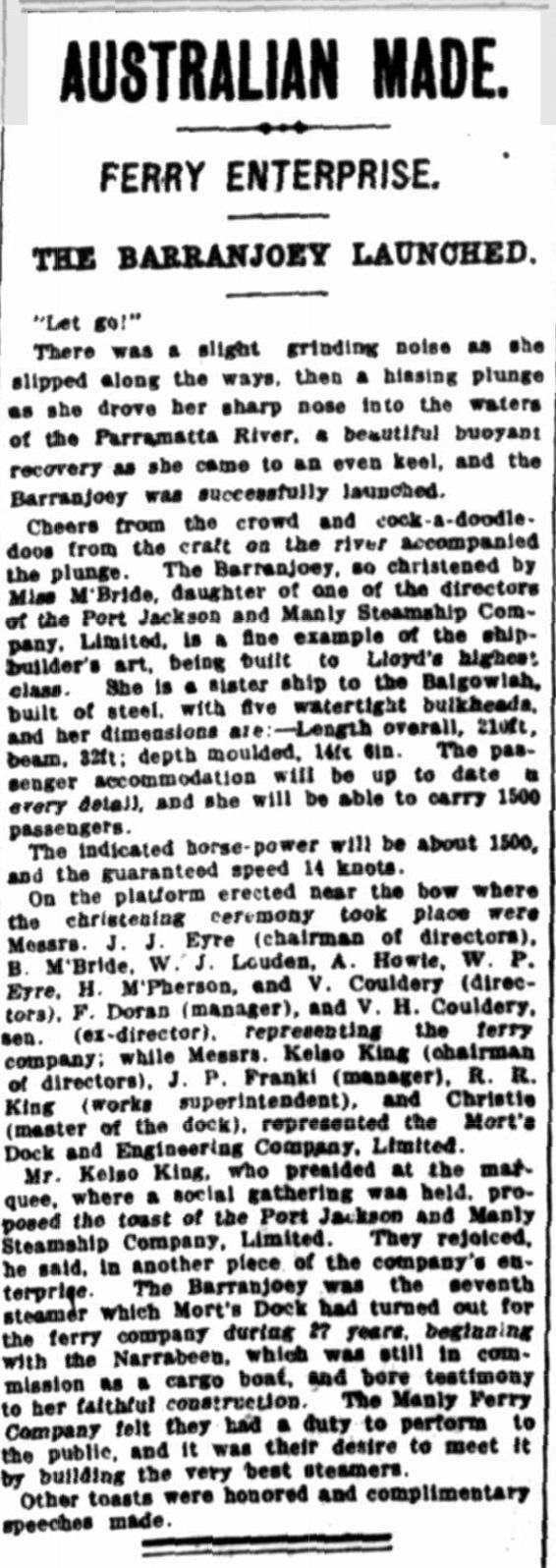
AUSTRALIAN MADE. (1913, May 8).Evening News (Sydney, NSW : 1869 - 1931), , p. 7. Retrieved from http://nla.gov.au/nla.news-article113371261
This photo shows the staff of Palm Beach Marine Service in 1973. Left to right they are: Ron Parker, Bob Tatterdel, Bob Lyall, Don Carrol, Lindsay Wellings, Lance Knight, Jim Faulkener, Owen Morris, Jim Fisher and George Hannaford. Photo courtesy Avalon Beach Historical Society, Geoff Searl OAM
The 72 foot yacht 'Ballyhoo' was built in 1974 for Jack Rooklyn who owned a slot-machine business called 'Bally'. She was designed by Ben Lexcen and won line honours in the 1976 Sydney to Hobart. She was later renamed 'Mistress quickly'. Photo courtesy Avalon Beach Historical Society, Geoff Searl OAM
On the slips at Palm Beach Marine Service in July 1975 is the 'Boomerang' an Edwardian schooner designed by Walter Reeks built in 1903. She is now part of the Sydney Heritage Fleet. Photo by John Stone, and courtesy ABHS
Originally designed in the UK, and after approval from the War Cabinet, the Fairmile 'B' type motor launch was built in Australia by Lars Halvorsen Sons Pty. Ltd. at Ryde. She weighed in at 75 tons and was 112 feet and capable of 20 knots. This one called 'Ajax' is shown on the slips after decommissioning in October 1945. Her original armament consisted of a Rolls Royce 2 pounder along with anti-air and anti-submarine weaponry. Photo courtesy Avalon Beach Historical Society, Geoff Searl OAM
In 2013 - hanging around at Palmarine with Brian 'Friendly' Friend:
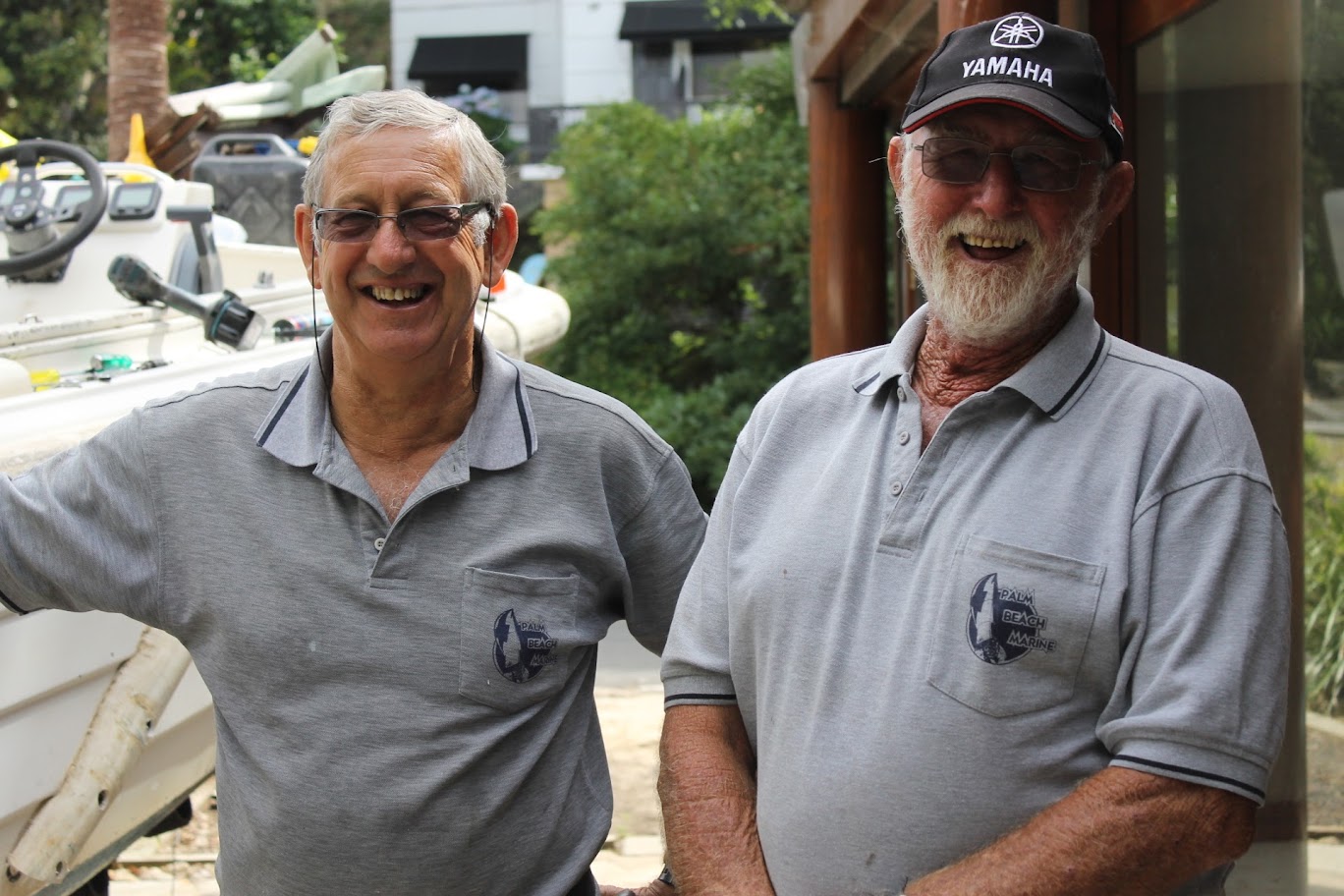
Lindsay Wellings and John Aldritt
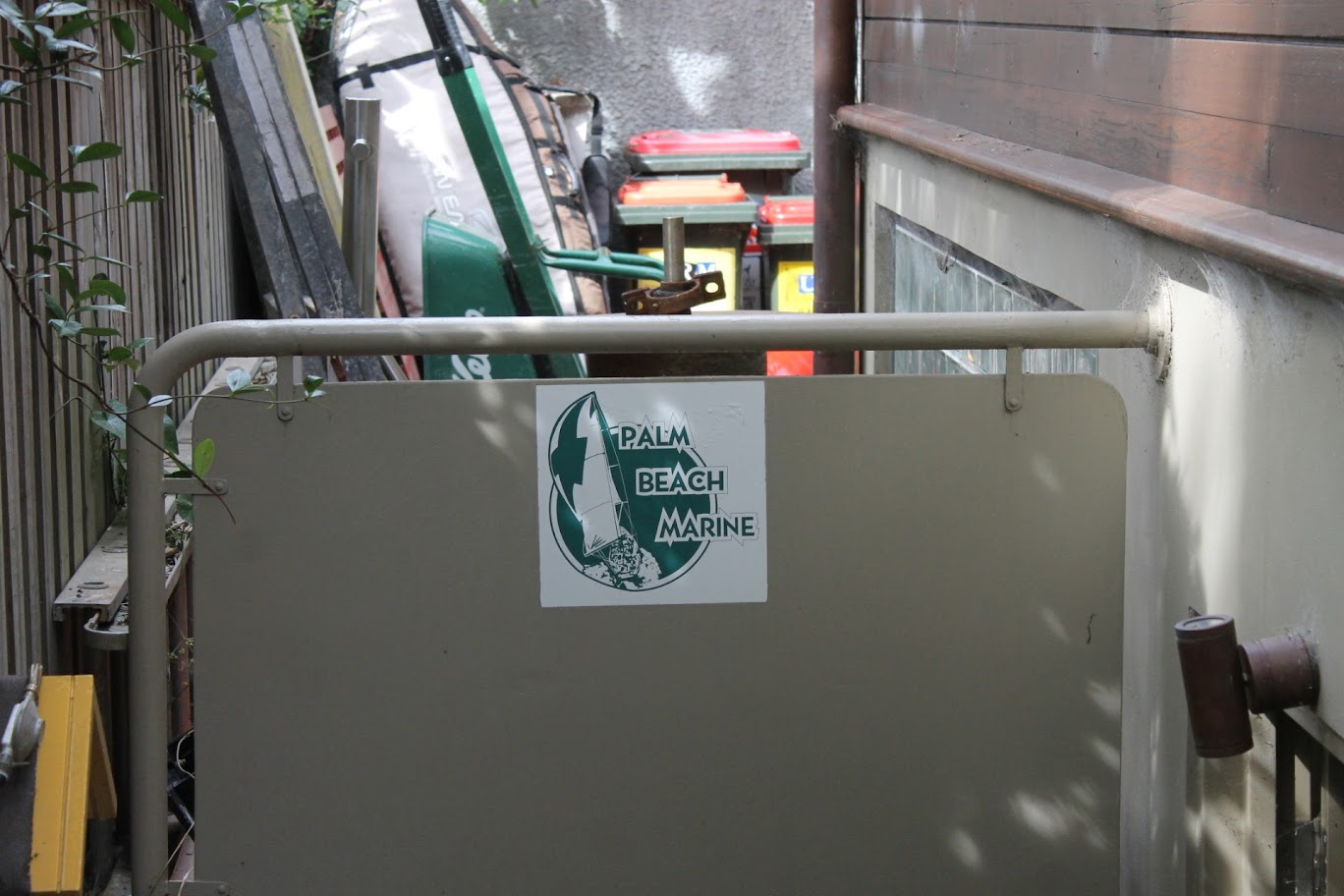
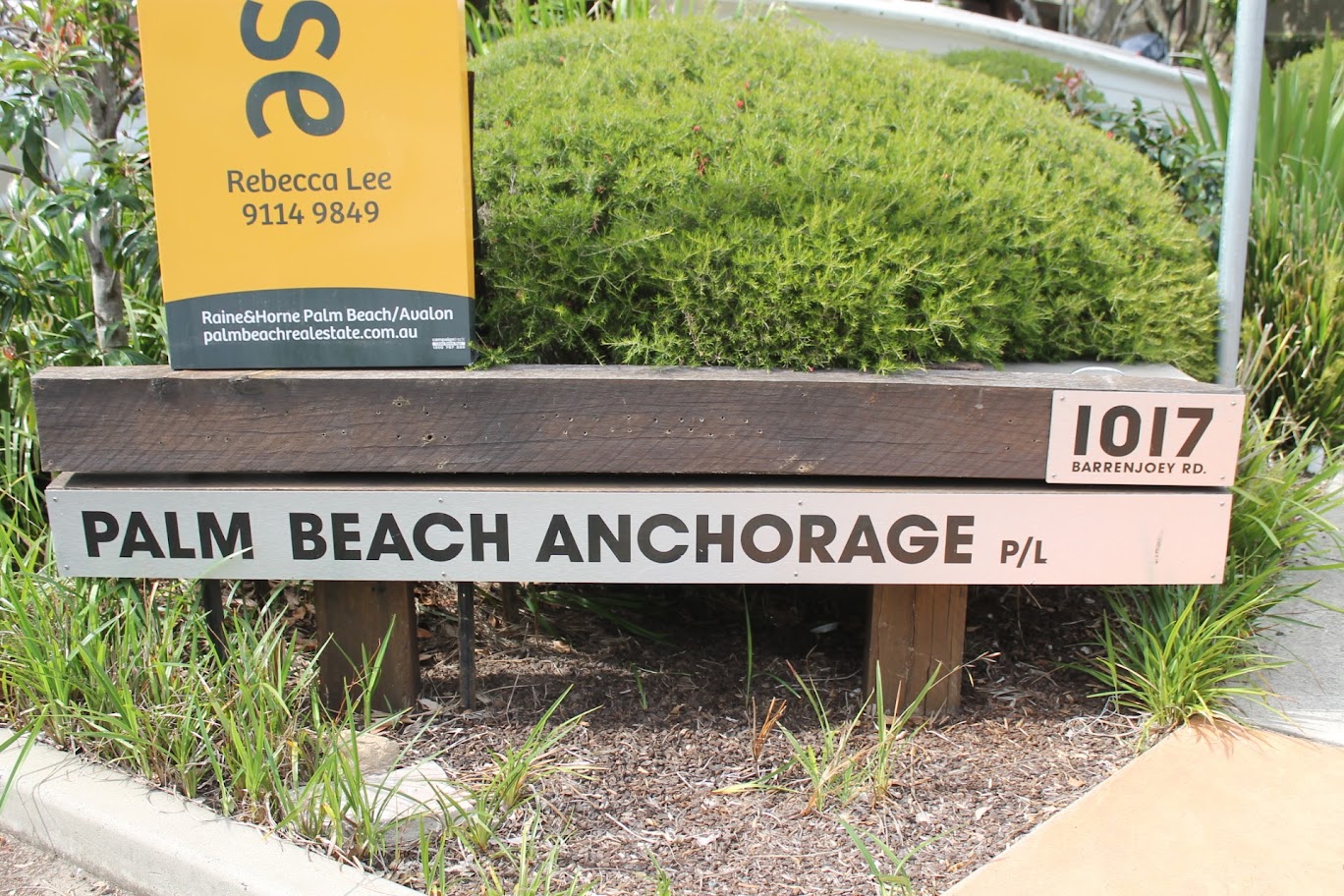
Lindsay Wellings (2012/13 chat): After PJS it went to Brambles then to John Andrews, then Jimmy Richards and Mick Donaldson, then Dennis O’Neil and John David, and then John David alone.
Goldthorpe and Smith opened Goldthorpe and Smith Brookvale after they sold. Ron Parker was the boss of Palm Beach Marine. Port Jackson Manly Steamship co owned the wharf next to Goddards and that’s where the ferries used to operate from.
I started with Palm Beach Marine in 1969. It was a quite different structure then – the old boatshed, with slipways, and ‘Allships’ (Alldritt) was here then. There was a cannery here. When I first started working here with the engineers it was Palm Beach Marine Services, which was owned by the PJMSC. The manger then was Chick Witchard whose son is still around – I passed him on the road this morning, young John – he works down in Mona Vale. The manager lived upstairs then – there was a loft.
The engineers were mainly doing service work. We were also manufacturing hydraulic steering systems and general marine engineering.
Incidents: One boat caught fire on the end of the wharf; we had fuel out the end of the wharf. We had an ex-Navy mechanic working for us who jumped on a workboat and towed it out into the middle of the bay where it burnt to the waterline.
PJMSC were running the Western Foreshores ferries – and the Brooklyn ferries to Dangar Island, and they were running a trip to Patonga and Bobbin Head. I can remember the Barrenjoey, the West Head, the Currawong Star, the Swanhilda.
The West Head went to Patonga and Bobbin Head. The Currawong Star and another one used to do The Basin run and the Barrenjoey the run to Dangar Island. When it was too rough to operate the ferry services they used to use this wharf (Sandy Beach – south end) – they had permission from Goldthorpe and Smith – because they used to surf the shorebreak there.
The bowsers at the end of the wharf got covered in waves once – the trolley that used to run down the central rail on the wharf got washed off. They’d put all the goods in that to take them out to the end of the wharf – this is the one next to Goddards. We call it ‘Martin’s’ now because Jack Martin married Wally Goddards daughter. It’s all gone now though – the slipway that Goddard’s owned went about four or five years ago.
__________________________________________________________________________________________
These photos from 2013, especially John Alldritt grinning at the camera, bring back memories from way before then - and the people who have worked out of our various Pittwater estuary boatsheds over the decades and how that, to them, also meant looking after the community.
A few months ago Pittwater Online was fortunate to spend smoko with with Russell Walton, Peter Verrills, Brian Friend, Christopher Aldritt, and Jayson McDonald at Palmarine. Although a little alike a Broken Bay Water Police reunion for a moment or two, Russell and Christopher still work at Palmarine, and have done so for years. The other gentlemen were able to provide further insights into the boatshed and its operations, which is shortly to celebrate its 75th year in this location.
Left to right: Chris Alldritt, Jayson McDonald, Russell Walton, Brian Friend, Peter Verrills
Russell – when did your family first start at The Boat Shed at Palm Beach?
We first went to the Barrenjoey Boatshed in December 1975. Dad had just started Aquatic Airways. We had the lease there until 2007.
What was your dad doing prior to running Aquatics Airways out of Palm Beach?
He was a Test Pilot. He served in the Reserves of the RAAF., was part of the Fighting 21st Squadron, but never saw an angry anything.
Where were you born Russell?
I was actually born here and we lived at the Serpentine Bilgola. When I was 2 we moved to Baulkham Hills because dad was a Pilot and worked at Bankstown so we moved out there until I was 15. Then we moved to Barrenjoey Boatshed and lived on site.
What were you doing at the Barrenjoey Boatshed?
When we first moved there I was still at school and then went on to become an Aircraft Engineer with dad’s company, Aquatic Airways. I did that for about six years and then joined the Police Force. I did that for about 13 years all up and then mum and I, Carmel Walton, had to buy the Barrenjoey Boatshed back after dad passed away, and I started up Barrenjoey Boating Services. We ran the Water Taxi and the Hire Boats and the Barges. This was in the early 1990’s.
Mum ran Carmel’s By The Sea for around 15 years and then retired. Jackie Glass took over from mum and when we sold Andrew (Goldsmith) took over and it became the Boat House.
When you were in the Police Force were you on the water?
Yes, most of the time, on Broken Bay with Sergeant Friend. I carried him for years. (laughs)
Friendly: and I’m still doing his work.
What was the best thing about being on the water as part of the Water Police?
Russell: The guys you work with and the locals, people like Pete here.
Friendly: only problem was he never had a notebook; everyone else did his work.
Russell: I had a good memory, never needed a notebook.
(Friendly laughs.)
Were there any challenges or dangerous events you had to deal with?
Russell: There were lots of rescues, that’s mainly what we did. We also did all the maintenance on the boats. There quite a few dangerous rescues of course.
What made them dangerous?
Russell: the conditions out at sea and the, at times, crappy old boats we then had to use.
Friendly: the only thing about working at Broken Bay Water Police was we were the only Police Station in New South Wales that did every facet of police work. We had all the Western Foreshores, Scotland Island, Dangar Island up the Hawkesbury as we used to backup Brooklyn as well. When we had crime general duties couldn’t get to it because cars couldn’t drive across water, so we had all these little pockets like Mackerel Beach we’d callouts to, The Basin during camping times – and there used to be a thousand campers there back then. You would have people stealing or assaulting each other and of course, in those instances, the coppers were called. We were the only Police Station in Sydney where if something came up we were the ones called – stealing from vessels, shipping incidents, rescues, offshore problems.
Where did you go after Palm Beach, Station Beach?
Russell: When we sold the boatshed I came here – to Palm Beach Marine. Chris and I had built a barge and we ran that out of here from around 2007/2008. We then became customers here when Lindsay was running the boatshed – he was working for John David, who used to own the boatshed. Chris and I were running it for about 2 years, which wasn’t a viable thing for us to do as we still had the barge then too. We sold the barge and ended up working for them from about 10 years ago.
What work were you doing via the barge?
All sorts – we’d cart concrete trucks offshore, do mooring services, salvage work, removalists, whatever was required.
Chris what was the barges business called?
Chris: Saltwater Barges was the business name and the barge was called Bangalley after the headland at North Avalon.
Haven’t you been in the Police Force too?
Chris: Yes; I did a full 12 months, to the day.
This is a bit like a meeting of the ex-Broken Bay Water Police here!
(All laugh.)
Chris: I started that and then got out and went back to ferries, driving this time. I couldn’t stand being in an office, I had to be outside, on the water.
Chris, when did you start working on the water – was it with your dad?
Chris: Dad was a fisherman and of course I used to go and help him. I used to live at Coasters and catch the ferry to school – Pete would employ me on the weekends as a deckhand, so that too was part of my early years on the water, and while I was still at school. That was on the old Melissa, then the Ellen Ann and then the Merinda, then the Myra – the list goes on and on.
Russell: that Ellen Ann was a lovely boat Pete.
Pete: now she’s in cold storage.
Russell what are you doing now?
Chris answers; not a lot.
Russell: I just manage the marina. So we have 64 moorings here. So we do tender service, a bit of maintenance, whatever needs to be done really.
Do you think you will ever get off the water?
Russell: no, I don’t know anything else and I’m happy here.
Which is your favourite boatshed?
Russell: Still Barrenjoey. I grew up there and lived there for many years. That and maybe Careel Bay boatshed – we used to go down there and be part of the Sand Crab Disco, that was always good fun.
Yes; the Sand Crab Disco is quite famous among local boatsheds – more lurching from side to side than actual dancing apparently.
Russell: yes, it was back then, but yes, Barrenjoey Boatshed remains my favourite.
What’s the best thing about staying on the water all your life for you?
Russell: Your mates – the people you meet – your customers are fantastic, everyone is here to have a good time and relaxed, so it’s a good place to be.
Friendly: I think the main reason Russ is everyone that you meet wants to be on the water, it’s not something you have to do, and when you look at people going to work, they have to go to work, they have to drive to get there. When you’re on the water here, even if you’re working, it’s still a pleasure to be out here. Depending on your weather and stuff like that, all the people you meet on the water, they’re all waving to you – it’s a community.
Russell: except for when you’re on a police boat n the middle of big seas – there were a few times there I thought ‘we’re going to die’.
Jayson: there were a few times there I thought I was going to die.
What was the most challenging water event you had with your dad Chris?
Chris: Just putting up with him I’d say. We didn’t have any on water incidents – he didn’t pick the weather conditions the best but he always knew what he was doing.
What’s your favourite boatshed Chris?
Chris: As far as boatsheds go Careel Bay would be it for me – that’s my favourite. I remember having a few beers and relaxing at Barrenjoey. At Careel Bay I really enjoyed just talking to the characters you’d meet there, having a beer of an afternoon.
Jayson, you’re an ex-Broken Bay Water Policeman too?
Jayson: Yes I am.
When did you start?
In 1990 until 1995.
And you’re still on the water now?
Yes, I’m at the Royal Motor Yacht Club now.
What are you doing there?
I’m currently working as the CEO – I was on the Marina at the RMYC for five and half years prior to that.
What’s the best part about staying on the water for you?
Jayson: The job is unreal but equally the people. The lifestyle and camaraderie just cannot be beaten. Everyone has the same outlook, probably from enjoying the same things. I think it’s also something that gives you the opportunity to look after people and make sure that when they’re out there to enjoy themselves they can do so. All that work you do to keep them safe, to look after the basics, is what ensure that can happen.
When I come up here and go to a boatshed like this I meet people who have been on the water all their lives. You have Pete here who had all the ferries, we used to do training days on the single sweep ferries, you see Friendly with all his background in Policing both in Sydney and out here, you see Stuffa and are around all his knowledge and growing up with his father fishing, and being his horn at us the other day when we’re on Sydney Harbour, and then you have Russell and I and what we’ve done and what you have is this conglomerate of people and knowledge in the community and on the water. We may not see each other for 3 months but then you walk into a boatshed and it’s just like yesterday.
What were you doing prior to joining the Police Force?
I was running a commercial boat, mainly doing charter work. Being on the water is in your blood, once you go there you don’t go back.
I was also in working at Sydney Ports for 5 years. My official role there was Shift Master so either in charge at Port Botany and Sydney Harbour, Bulk Liquid transfer, Ship Auditing – I was on the Ted Noffs, the fire tug, so we’d do all that as well as emergency response.
Now the Goddards had a ferry service out here?
Pete: They were the originals.
So yours was a carrying forward of a local Palm Beach ferry service?
Yes, the water was always in my blood, I loved the water, loved boats. So I started Palm Beach Ferry Service; took over from Don MacKay.
Where were you running to?
When I first started the run was to Bobbin Head on a daily basis. I bought the Ellen Anne in '76. Later in '76 I bought the Merinda with the Basin-Mackerel Beach Ferry Service. So then I had two runs, which didn’t leave me with a back-up boat if something went wrong or if we had overloads anywhere. So I figured we needed three boats and of course it just kept growing from there; you had to get your contracts through the Department of Transport, as it was called then, in those days. Then it became the Department of Motor Transport now it’s the Roads and Transport.
How many ferries did you have over that time?
I had 19 ferries. There was Ellen Anne, second one was Merinda, third was Merinda II, 4 was the Hawkesbury, a Brooklyn boat, which I renamed Melissa after my daughter, then the Myra which was my mother in laws name, then we were starting to get everything else; I’d sold the Ellen Anne to build the Merinda II…and everything was starting with an ‘M’ and we didn’t realise it at the time, and ending with an ‘a’. so we kept that going for quite a while. After the Myra came the Mirrigini which was a local boat from here; Don Mackay was the previous owner, then the Mia, which was named after my dog; she was named Mia, she originally came from Brisbane River. She was a little cross river ferry up in Brisbane River and I used her as a backup for The Basin run. Mind you, as I was buying one I’d be selling one, so really we did increase in numbers but after we’d have three or four I’d sell a boat.
Friendly used to drive one; the Ellen Anne; she was a good boat to drive, like the Merinda. Merinda was a good boat to drive but a terrible boat for passengers; she was a well decker where you’ve got to walk down into them, and the Mia was a well decker too; they were the only two well deckers I had.
Friendly: Melissa II was a heap of junk; that was that twin screw single rudder…
Peter: Melissa II was great; it’s Melissa I you’re thinking of.
Friendly: Don Mackay was always on the southern end with the Marrigini and then we’d come in on the Melissa I from the northern end and it’d be blasting from the south, and as soon as you’d get your stop-go to bring her in the bow would just get blown away and you’d get blown towards Gonzales boatshed because this thing wouldn’t go backwards. You’d give if full stern and it’d still…so you’d have to come in at this angle, and I taught his young son, young Mark (Peter’s son) who was my deckhand at the time, I taught him to take a pylon with the deckline at 70 feet; I’d come at the wharf and he’d give it a hoy, get the pylon and begin tying up!
Which was your favourite?
Peter: My favourite ever…the Myra, she’s still running. She’s just the most beautiful boat to handle. She did everything you asked her; it shouldn’t have been called ‘Myra’, it should have been named after a bloke because it behaved so perfectly.
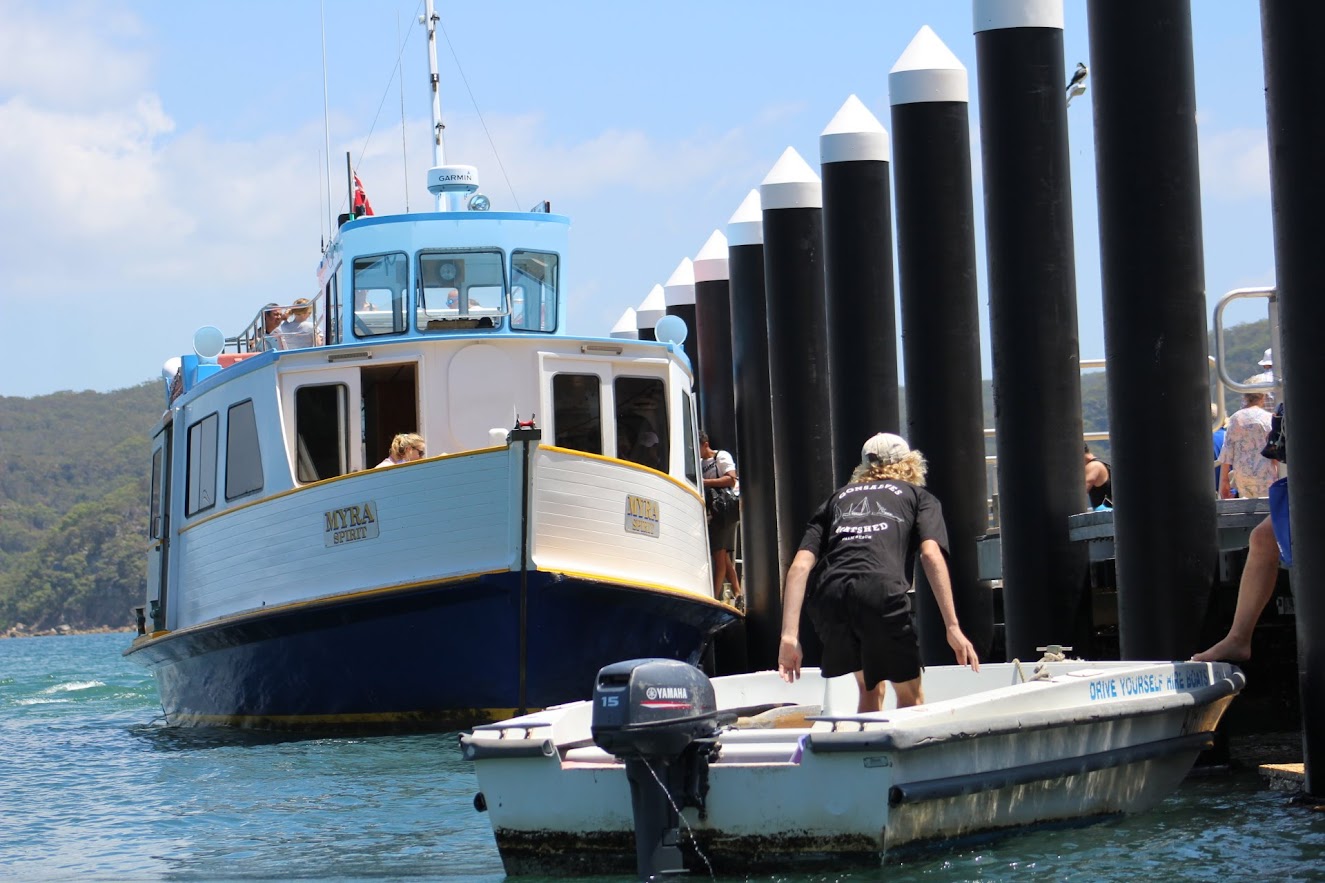
Peter, which was your first boatshed memory?
Gonsalves Boatshed down at Snapperman, because we were all relatives, all related.
There are some tall tales still ‘floating’ around about Sunday nights at Gonsalves – any truth to those?
Some truths there. There were some very interesting evenings there – I was only a young bloke then so I hadn’t witnessed all the activities associated with Sunday nights at Gonsalves.
Didn’t a lot of the founders of Palm Beach RSL used to meet there?
That’s right, that’s what started the club, before they had a shed at Iluka Park for a while. Carl Gow was central to this. He’d served in WWI and his brother and father were stationed at Barrenjoey Lighthouse as the war was ending, so he came here.
Carl Gow was the instigator of it all, and his batman from the First World War, Harold Richardson, who had a leg blown off, he became the Secretary of the Club. So between Carl Gow and Harold Ricardson they started the club, in a shed, down where Lucinda Park today is.
How big was the shed?
About 20 feet by 12 feet, and it was all voluntary then. About 4 o’clock in the afternoon someone would put a keg on and back then it was all just donations to pay for the grog. I was too young to be part of the drinking of course. I soon caught up later on.
When they got the premises where the existing club is the shed had to go from the park. I ended up with the shed. I had a block of land on the waterfront up at Wiseman’s Ferry where we used to go water-skiing of a weekend. So the shed went up there and became our little lodge.
Gonsalves is still going – what’s the best memories you have associated with that boatshed Pete?
Back then there was a lot of fishing associated with that shed. My uncle Frank Gonsalves had three beaut trawlers, the Joycee, the Caroline H and the Mary J, that used to fish out the front here, on Pittwater.
The Caroline H is still going – the Mary J is down in cold storage though.
How did she end up in cold storage?
A bloke called Bert Singleton owned it when it met its Waterloo, he only had one leg too. He broke down at sea and they never had two-way radios or anything like that. This coastal steamer came close and they waved it down. The ship came over to the poor old Mary J, and there was a pretty big sea running, and the Mary J got sucked in under the stern of this steamer and the ship went up on a wave and came down and just squashed her. She had a fishing party on her too at that time, quite a few blokes – but no lives were lost, everyone survived.
Friendly: who owned the Rendezvous then?
Pete: Tom Mann – he’s the one that had the taxis.
Who built the Goddard’s boatshed Pete?
The Goddards built that. They were Shipwrights, knew what they were doing. The unusual part about that one was that Wally Goddard, on the block of land beside it, built a timber garage which was so interesting to go into, he’d nailed all the studs to the bottom and top plates and these were morticed in to the top and bottom plates – there were no nails, it was a classic.
Friendly: that’s pretty amazing – shows you what boat builders can do.
Pete: that’s how they did it.
Palmarine commenced as Goldthorpe and Smith originally?
Pete: that’s right.
Do you have any memories of them Pete?
Pete: Tommy Smith was the Engineer and George Goldthorpe used to run it all. They had this beautiful big slipway here….
Russell: They used to build big Tugs and all sorts of boats here.
Pete: yeah – big tugs were built here, two of them – these went to Queensland, right up to Cairns. These were built under contract, in steel.
Friendly: the main slipway was on that side (south) and they had a smaller one on this side (north). It was pretty good to see something of that scale built here.
Pete: They rebuilt that classic yacht the Boomerang here as well and re-motored it for when the Royal Family were coming here. She had a hob keel and a broken back when she came here, so they put a new keel in her. George Hannaford the Shipwright worked on her.
Chris: The Barrenjoey used to run out of here all the way to Lord Howe Island with supplies.
Friendly: when they used to do that run they didn’t have all the technology you have onboard today – they’d go via the compass. When they got outside of here they’d pick up the beacon and just keep heading for it. Those who remember Dr. Bill Hock will recall the lady he met up with Judy, she was the cook on the boat – and a brilliant chef at that, an awesome lady.
Pete: the Barrenjoey was a beautiful big boat that was done here too. That one is still running too – she’s in Bali now, doing a tourist trade thing.
Who bought Goldthorpe and Smith’s shed?
Friendly: The Port Jackson Steamship Company. They had Goddards from December 1941, although they didn’t commence until February 1942.
Pete: Goldthorpe and Smith had this one- Port Jackson company took over Goddards. Port Jackson sold to Brambles, who stuffed it up completely. Within no time at all Brambles had lost the ferries as well as all the runs; The Basin run, the Bobbin Head run, the Dangar Island service as well. It all got split up and sold off to private enterprise and individuals. That was the end of Goddard’s.
When did they demolish the wharf?
Pete: the slipway was the first to go. They had a beautiful big boat called the West Head, which they slipped on the cradle, lashed the cradle to West Head and relaunched her, and drove her and the first slipway around the corner to here. Jimmy Goddard did that.
What was Jimmy Goddard like Pete?
Pete: He was a bit of a character, that’s for sure. He liked a rum, and a scotch.
Jayson: he had this boat that would make a noise ‘choof choof’, you could hear him coming.
Pete: and every time it made that noise there’d be a little cloud of white smoke.
So the Bill Goddard who has been helping out with research is Jimmy’s son?
Yes – and there’s Alan too – he moved down to Tasmania when Jimmy did.
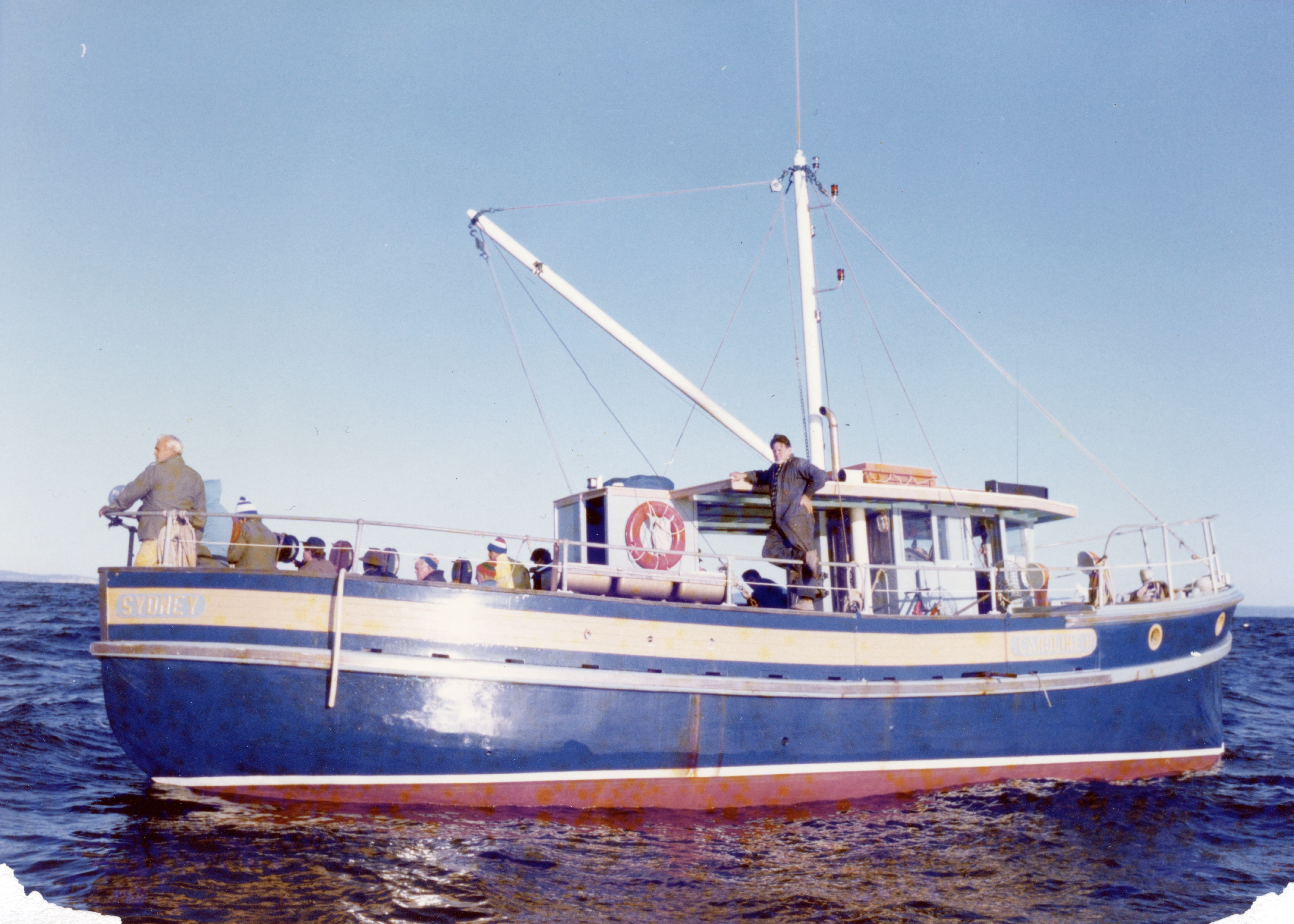
Caroline H with a Fishing Party and Jimmy Goddard. Photo courtesy Bill Goddard.
Didn’t the chap who designed the Opera House work out of one f these boatsheds so he could have some peace?
Pete: Yes; that was Utzorn and he was at Goddards. He was living at Bayview then.
Chris: he had that spaceship house, up above Bayview.
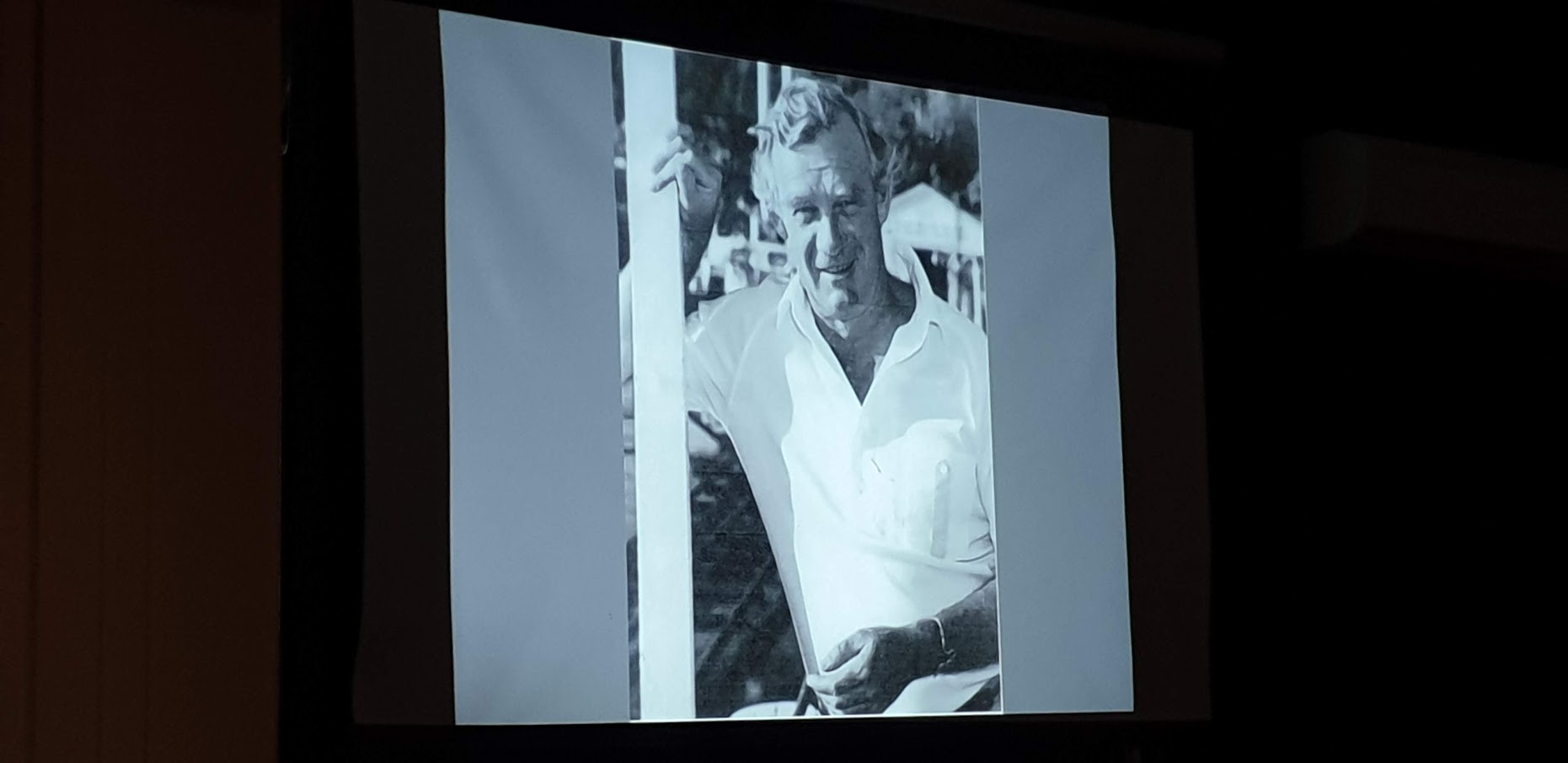
Joern and his team occupied the ground floor of Goddard’s, and installed a solid glass wall along the front, which would have afforded an inspiring view from the drawing boards. In 1964 Joern Utzon moved his drawing office for the Opera House project from Bennelong Point to Goddard’s Boatshed, to distance himself from increasing tensions with the government of the day and press intrusions over the increasing cost of the Opera House project. The Utzon family lived at Bayview, and later at Palm Beach and Joern reportedly said Pittwater reminded him of the Oresund in Denmark. Photo and Information: ABHS
And what about Carl Gow Pete – what was he like?
Pete: He was a thorough gentleman, a lovely man – beautiful bloke. The only time I’ve ever been given anything of any great value, it came from Carl Gow. He had 80 acres of land on the Hawkesbury River, between Spencer and Wiseman’s Ferry, which he split up into lots of 10 acres and gave all of us kids 10 acres each. That got me going with a little bit of money.
He was here until he passed away – never married.
And where’s young Frank Gonsalves now?
He’s in America, in Virginia – although he still has some acreage in Australia, up at the Daintree. He went into the water too, was a Shipwright. He served his apprenticeship here, at Goldthorpe’s.
How many people were working here during its boom times?
Pete: there’s a great photo with the Wraith of Odin on the slips here and there would be around 20 people working here. She was a pretty big boat, about 22 metres
(‘Wraith of Odin’ is 1 of 5 (?) built to the ‘Malabar XIII’ design around 1947-50 of which there are 2 in the USA, 1 in France, 1 in Ireland and 1 in Australia. ‘Wraith’ did 6 Sydney-Hobart races in the 1950’s with a further 15 years of coastal racing. I am the 2nd owner (Keith Glover) – 1996 to date. https://classicyachtinfo.com/yachts/wraith-of-odin/ )
She used to moor just here, she was built for and belonged to a Dr. O’Brien who owned a house about half a dozen houses down from here.
What’s the loveliest boat you have seen here?
Chris: I like them all but if pressed – the Boomerang.
Russell: the Cambria, and Taronga – Taronga was one of my favourites, she was rebuilt here at the shed. That was done when it was Palmarine – Palm Beach Marine.
And Iain Murray had Palm Beach Marine at one stage?
Pete: Yes; he was alright.
Chris: he built a couple of yachts here, precursors of those that were built for the America’s Cup.
And now it’s called Palm Beach Anchorage?
Russell: that’s right – there’s still an office down in the basement but it’s apartments now.
How did you start your high life on the water Pete?
Pete: I wanted to leave school at a very young age, and so did my Intermediate Certificate and bailed out of school, much to my old man’s disgust. When school went back after Summer and I wouldn’t go he said ‘you’re going to go to Tech then and become an Architect’. He was a Builder – the last thing I wanted to do was be a bloody Architect. So I did my apprenticeship as a Carpenter but then I couldn’t cope with going to renovate someone’s house and being told what to do by a woman so I ‘stuff this; I’m getting into enough strife at home without going and working for a woman’. So I bought my first ferry, the Ellen Ann. My grandmother, Grandma Gonsalves, was a Walter from Stockton that had the Stockton ferries and I ended up with one of their ferries, which was the Arthur G Walter – we renamed it Ellen Ann, after mum. That got me going in 1976.
Where were you running her to?
I used to go to Bobbin Head in that one, in Bobbin Head Charters, and to Patonga as part of Patonga Ferries for a while, in the school holidays. In 1979 I bought The Basin and Mackerel Beach run and a boat, the original Merinda.
When did you start the trips over to the Central Coast?
29th or 30th of November 1999. I sold out in 2004.
Any rough trips?
Oh yes, when the seas were running as you get past Barrenjoey Headland. I actually hit the bricks over there at half tide rocks once; fortunately just dinged a rudder and a prop. When you go past the headland, during Winter and there’s a good swell running, it can be challenging.
Which is your favourite boatshed Pete?
I grew up at the Gonsalves boatshed, so that would be mine.
And what’s the best thing for you about being on the water all your life Pete – I know you and Tommy Gilbert used to cook just caught prawns down on the beach off Waratah as youngsters – but since then?
And young Frank Gonslaves was there too for that, and Brian Ellyard.
I’ve done a bit of caravanning since retirement and it’s always just so bloody good to come back to Pittwater – there is nothing like it anywhere in this country – we are so lucky we all grew up on it.
Is what you have as a group, and this greater on water community here, is that unique to Pittwater or have you seen it occurring elsewhere for this amount of time, decades by now?
Friendly: I don’t think it’s unique to Pittwater but Pittwater is some special place and people. I’ve worked elsewhere, at Port Kembla, and down there it’s virtually commercial and you’re surrounded by the steelworks. Sydney Harbour was great when I first went there in 1969 – the commercial shipping was fantastic; watching them come in; you had to understand what numerical flag it was flying, so you knew where it was going to berth. Some of them you had to onboard – if there had been a death at sea for example – Sydney was completely different to here.
Here at Pittwater it’s a great place to retire, and it’s a beautiful place to be, so that is what’s in the people you meet here. Occasionally you will have one idiot on Mackerel Beach or one idiot on Scotland Island and then you have to deal with that – the rest of the time and for the rest of the people, I don’t think there’s actually any bad people out here.
Jayson: and the community is an amazing community. You never get people who make you part of here and what’s going on here as quickly as happens here.
Friendly: and in that if you do have someone who wants to be a problem they soon get a clear message form everyone else here about what’s acceptable and what’s considered a waste of time and energy.
When I first came here we only did the station from 8 until 4 and had a boat stationed down at the General Store, right next to the Pasadena at Church Point. We had a little room there that the Volunteer Coastal Patrol used as well – that’s where we had the original Vanguard and the Valiant I, which was a timber boat, and we’d work out of there.
Our work in this area, as I’ve already said, is completely different to any other Water Police Station. Everything they do at Port Kembla is outside, at Coffs Harbour, they’re outside, at Port Stephens, they’re outside. Here we responded to the people here when they needed help – there’s about 124 houses at Mackerel, 308 houses on the Island….
Jayson: there’s 2 ½ thousand residential places on what they call the shores.
Friendly: a lot of it is all National Park, you can’t get there by land.
What’s the relationship been like between the VCP and the current Marine Rescue Broken Bay over the years?
Friendly: with the VCP and MRBB and the Coast Guard, the Coast Guard used to be up at Cottage Point, the VCP went from Church Point over to the RPA, they had a little place in there which I think is a Ship’s Chandlery now, and then they went to the RMYC, our boss Buster Brown taught us that these people can be your back-up, so you look after them.
We used to train with them and would have operations up and down the estuary and river. There was a speed navigation trial that was run by the Volunteer Coastal Patrol and the Royal Motor Yacht Club and you’d get 50 to 60 boats working their way all around here, by chart work, up to Wisemen’s Ferry. There were some wonderful things that came out of this.
We could go over there and walk into the back bar and have a beer with them. This is what the people had – they had respect for you and in turn we gave respect back.
All the people in all the boatsheds were part of that. Buster Brown used to say ‘I want you to go down, see them, spend time with them and have a yarn with them; ask them what do they need, ask them to let you know if there’s anything happening on the water you need to look into. Two days later you’d go to another boatshed – then the next one. We got to know all the people around Pittwater. We always had one boat out – and whenever we had any serious problems they’d come from everywhere to help. You’d have Chris’ old man, Carl Gonsalves, Johnny Oliver – they’d all do whatever they could, at any time.
When we had those bad bushfires here in December 1994, if it hadn’t been for Alldritt, Carl, Johnny and Pete there would have been some serious problems. They started fire containment lines at the back of the houses at Coasters and if they hadn’t all those homes would have been gone. They saved Coasters, Currawong.
Jayson: Pete’s ferry services were the evacuation boats, topped up with boats from the Royal Motor Yacht Club, that was the drop off point, and still today there’s that same working together ethos - our major fundraiser for the last 12 months has been Marine Rescue – both Cottage Point and Broken Bay. Because they hadn’t been able to do their usual fundraising during Covid when we could open the club again they did their raffles every week – Broken Bay one week and Cottage Point the next week – and this has helped them raise thousands of dollars for their Units cost meeting needs.
The Timber Boat Festival raised funds that went to them – we do a few others annually too that help support these volunteer organisations within the community.
Pete: first Barrenjoey House burnt down in 1928. Verrills built the Palm Beach Boarding House on the corner of Sunrise and Palm Beach road – that burnt down too.
Thank you gentlemen!
_____________________________________________________________
In 2004 1017 Barrenjoey Road, the block size: 1332m² (approx), sold for $5,250,000 and plans for 1, 2 and 3 Snapperman Lane, Palm Beach, as apartments were submitted to Pittwater Council and ended up being approved by the Land and Environment court in 2001. The site was redesigned as 'The Boatshed' by architect Walter Barda, and now has three newish apartments that ''maximise the extensive and panoramic views that span Pittwater and its many bays''. Every feature and detail, every opening and curve was designed as an evocative interpretation of the sea. With an average of 3 bedrooms and 3 bathrooms each these were listed for sale at $5.95million, $4.75 million, $4.95 million and sold.
In 2014 documents were lodged to ratify the lots on the site to formalise the boundaries between the still present marine shop and parking areas. Palmarine still operates from the site, as can be seen through the work of Russell and Chris.
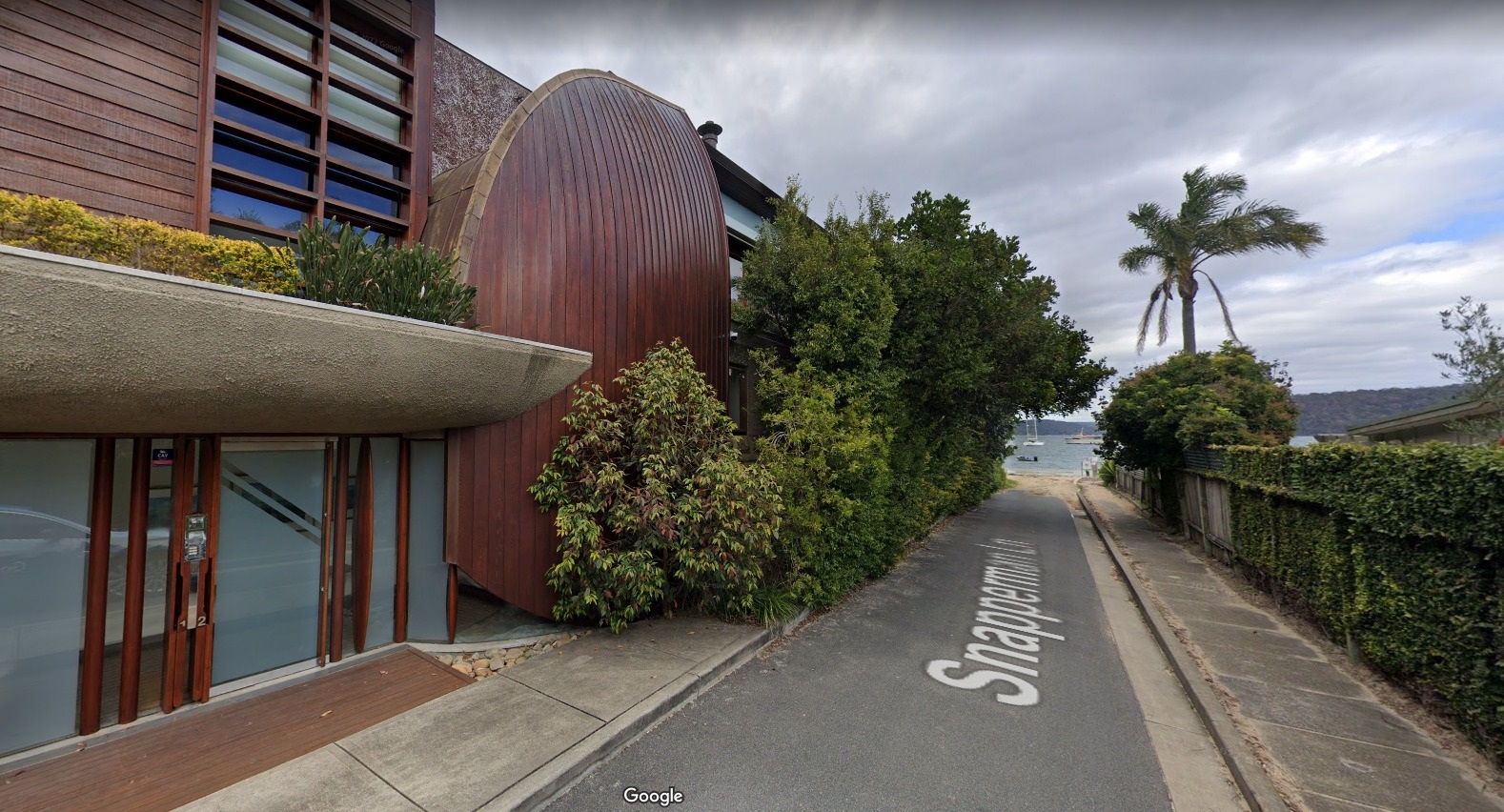
 1017 Barrenjoey.jpg?timestamp=1667884137220)
1-3 Snapperman Lane/ 1017 Barrenjoey Road, Palm Beach today. Photos; Google maps
- Rendezvous Tea Rooms and the Carl Gow and Reginald Howlett stores at Palm Beach
- Bill Goddard - the Goddard Boatsheds - Palm Beach
- Carl Gow and Frank Gonsalves Boatshed, Palm Beach
- Iluka Park, Woorak Park, Pittwater Park, Sand Point Reserve, Snapperman Beach Reserve - Palm Beach: Some History
- Careel Bay Steamer Wharf and Boatshed
- Barrenjoey Boatshed History page
- John 'Allships' Alldritt - The Barefoot Legend Of Pittwater
- Barrenjoey Boathouse In Governor Phillip Park Has Been Part Of Our Community For 75 Years In 2022: Photos From The Collection Of Russell Walton, Son Of Victor Walton, Pilot + Extras
- Careel Bay Playing Fields Reserve - Including Hitchcock Park: Birds, Boots & Beauty
- Pittwater Roads II: Where The Streets Have Your Name - Palm Beach
- Harry Wolstenholme, June 21, 1868 - October 14, 1930 - Ornithologist Of Palm Beach, Bird Man Of Wahroonga
- Early Pittwater Launches and Ferries Runs In Pittwater (Goddard Family at Palm Beach)
- Palm Beach Golf Course: Some History
- TROVE - National Library of Australia
- The M.V. Reliance: 100th Year Celebration
- The Fearless Men Of Palm Beach SLSC's Surf Boats First Crews: A Tale of Viking Ships, Butcher Boats and Robert Gow’s Tom Thumb 'Canoe'
- Camping At Palm Beach
- Palm Beach Surf Life Saving Club Part I - The Sheds
- Palm Beach Jetty - Gow's Wharf
- Barrenjoey House Celebrates its Centenary in 2022
- Carl Gow’s WWI Service in AIF
- Albert George Verrills 1886-1960
- Peter Verrills - Profile
- Fred Verrills – Builder Of Bridges and Roads Within Australia During WWII – Builder Of Palm Beach Thereafter
- Wilshire Park Palm Beach: Some History
- MV Elvina (Falcon)
RE will of ADA BEATRICE TOUGH, late of Auburn, in the State of New South Wales, pensioner, deceased.—Probate was granted by the Supreme Court of New South Wales on 8th February, 1962.—Pursuant to the Wills, Probate and Administration Act, 1896-1954 (Testator's Family Maintenance and Guardianship of Infant's Act, 1916-1954, and Trustee Act, 1925-1942), Clarence Ernest Tough, the executor of the will of the said Ada Beatrice Tough, who died on the 14th day of October, 1961, hereby gives notice that creditors and others having any claim against or to the estate of the said deceased are required to send particulars of their claims to the said executor, in care of the undersigned, L. Rundle & Co., at their office hereunder mentioned on or before the 7th day of June, 1963, at the expiration of which time the said executor will distribute the assets of the said deceased to the persons entitled, having regard only to the claims of which he then has notice. L. RUNDLE & CO., Proctors for the Executor, 66 King-street, Sydney. 1997—£1 12s. 6d. RE will of ADA BEATRICE TOUGH, late of Auburn, in the (1963, April 5). Government Gazette of the State of New South Wales (Sydney, NSW : 1901 - 2001), p. 945. Retrieved from http://nla.gov.au/nla.news-article220325575
Pittwater Local Environmental Plan 2014
Schedule 1 Additional permitted uses
17 Use of certain land at 1017 Barrenjoey Road, Palm Beach
(1) This clause applies to land—
(a) at 1017 Barrenjoey Road, Palm Beach and identified as “Area 17” on the Additional Permitted Uses Map, and
(b) that is subject to PO 1963/130.
(2) Development for the purposes of boat building and repair facilities or business premises (but only those associated with use of the waterway), is permitted with development consent.